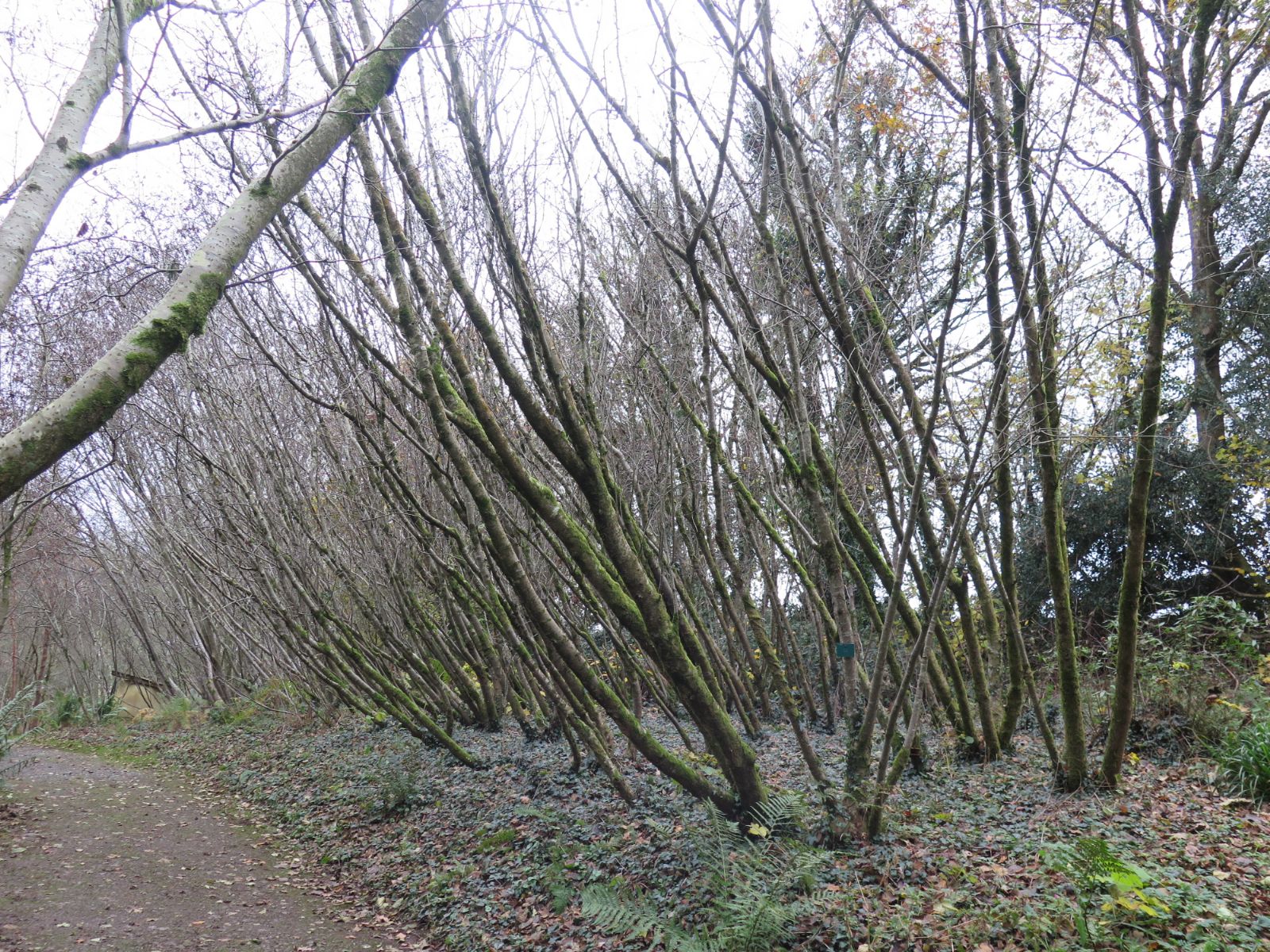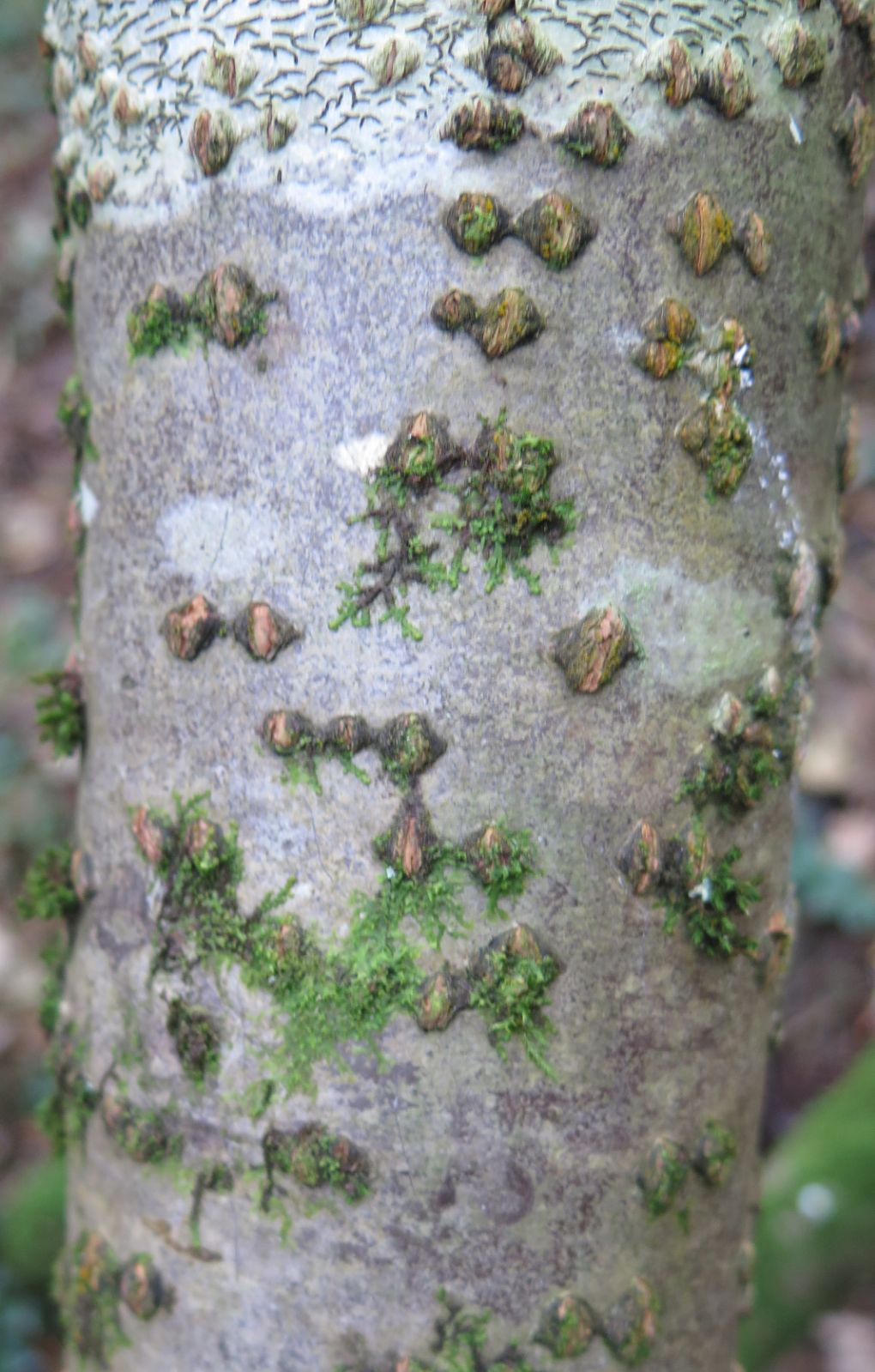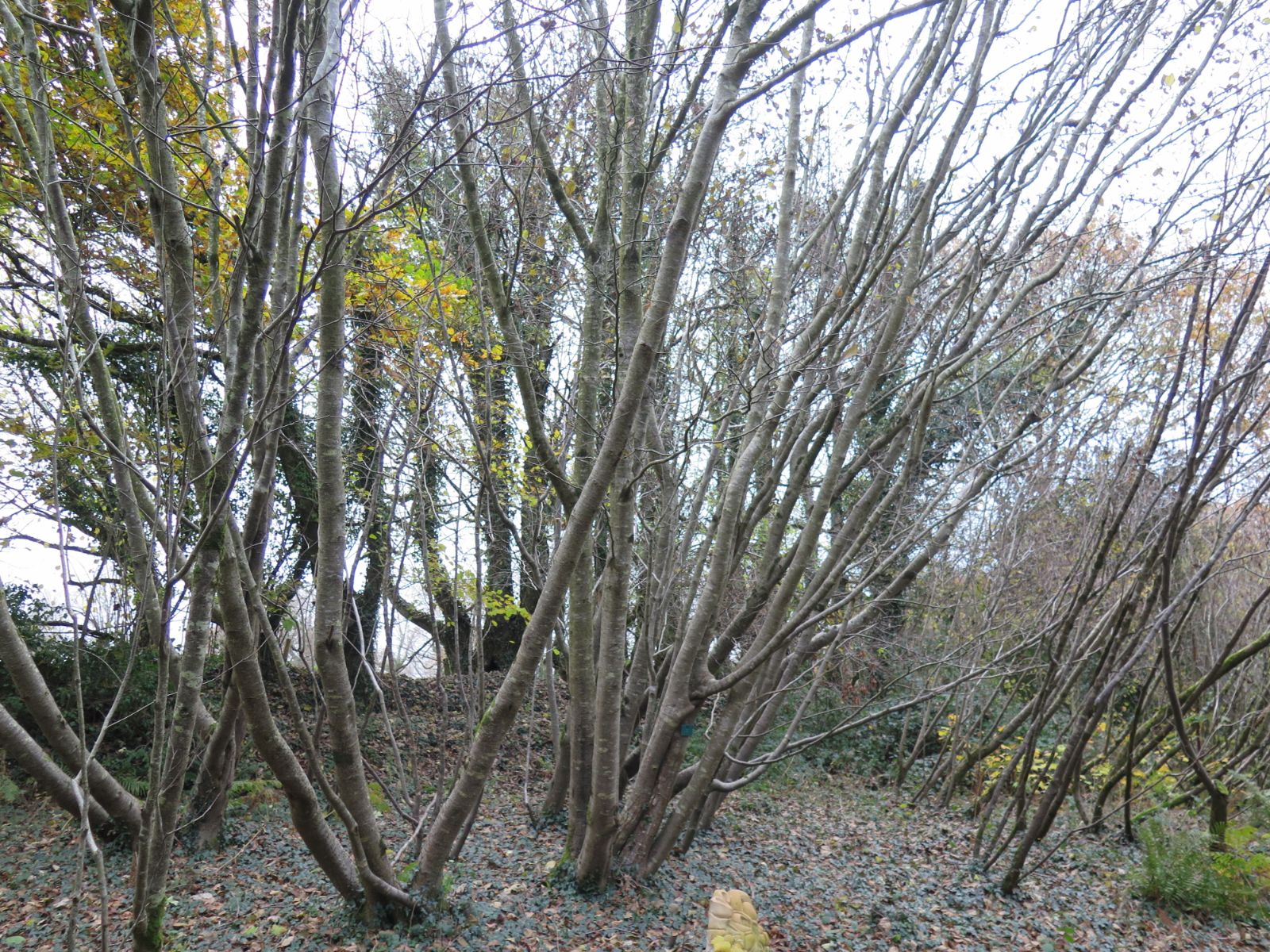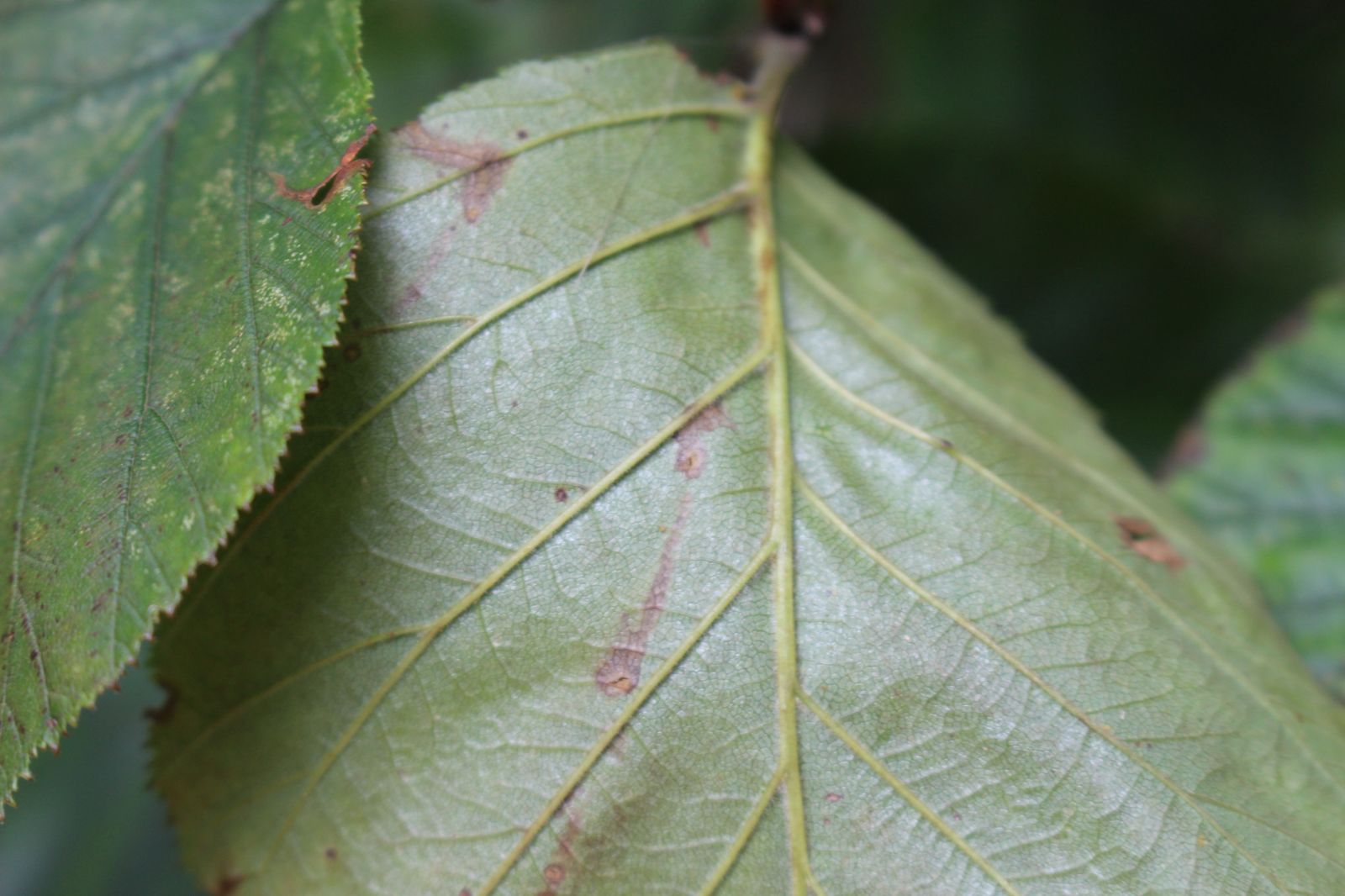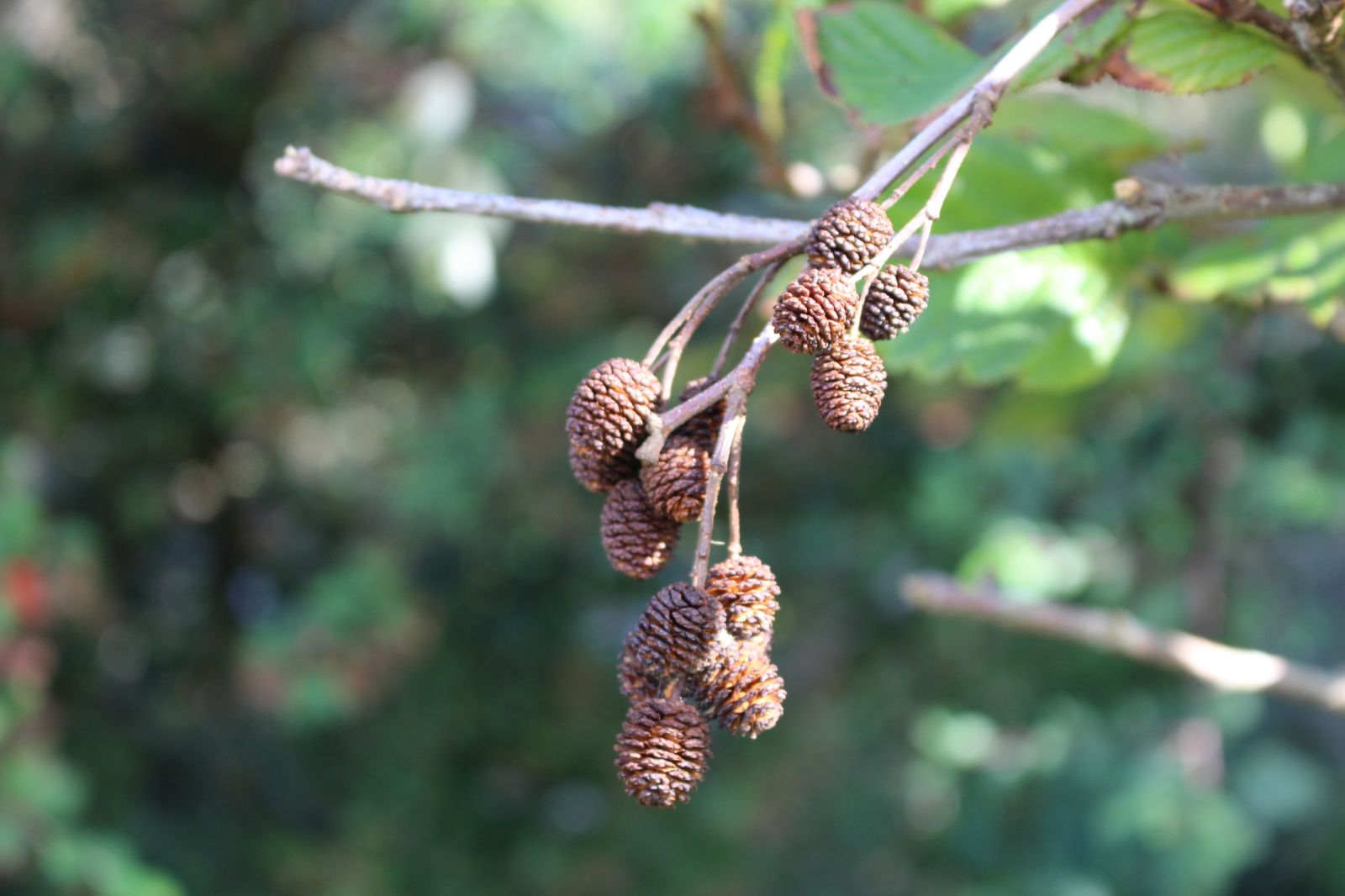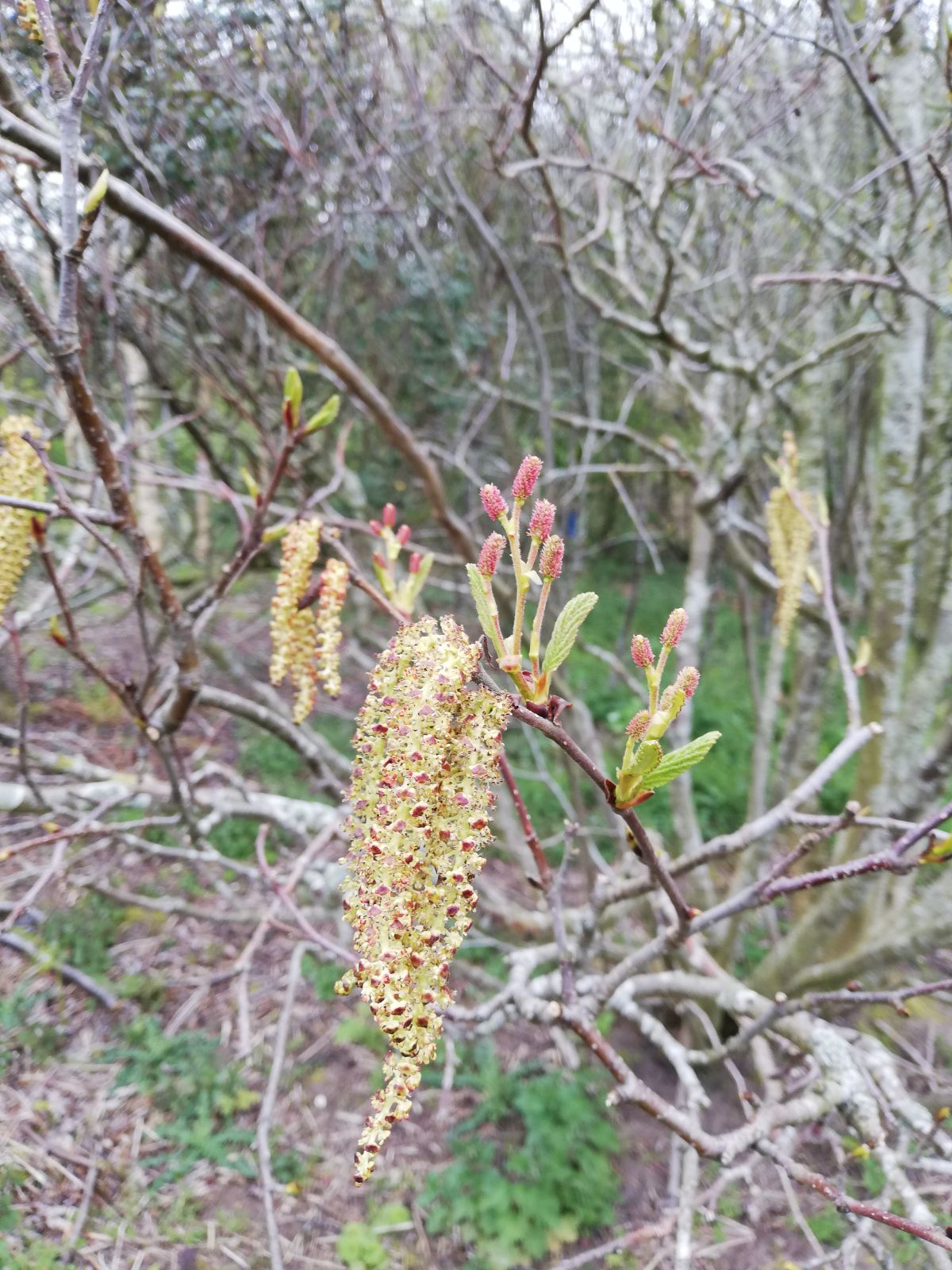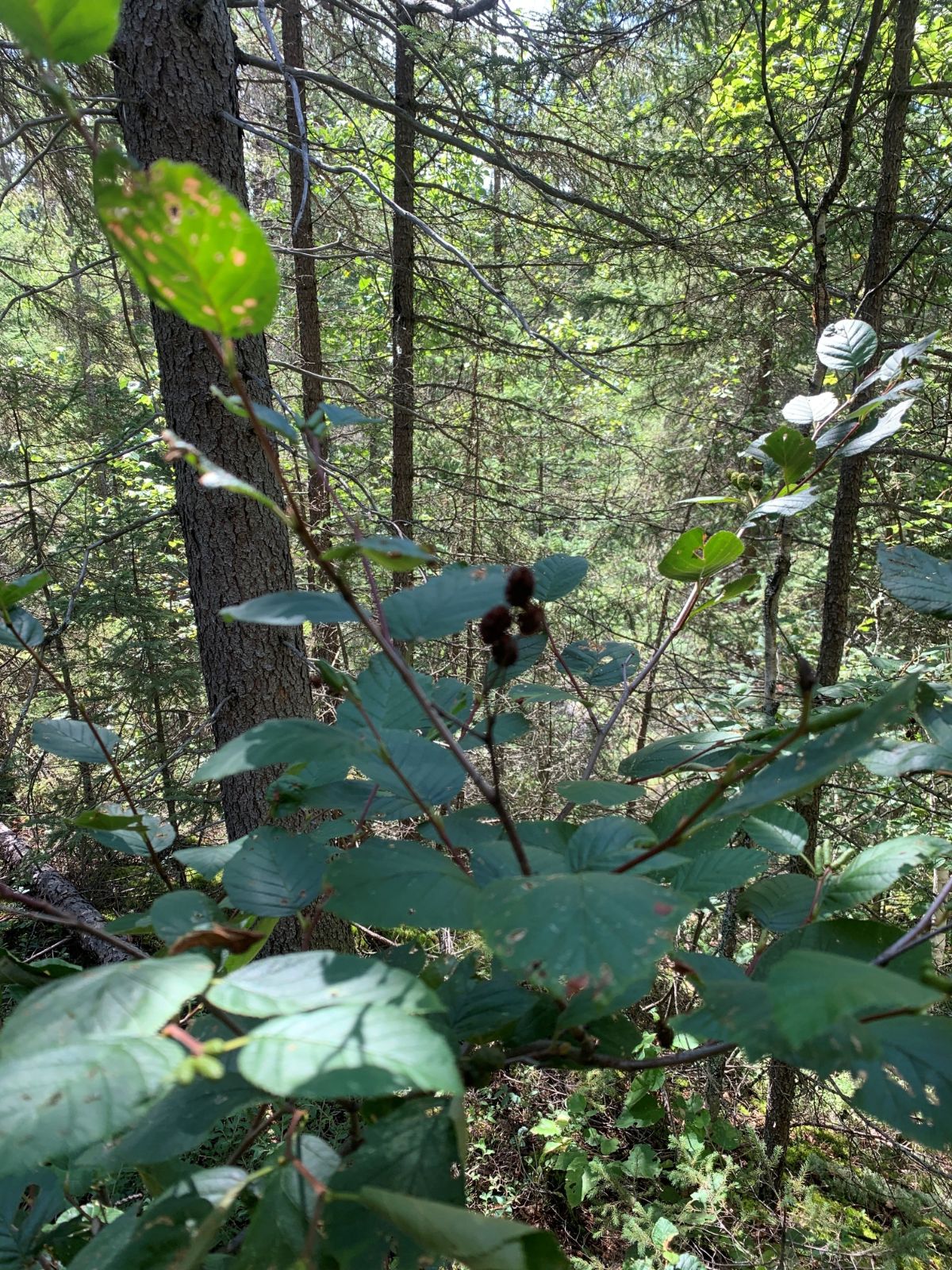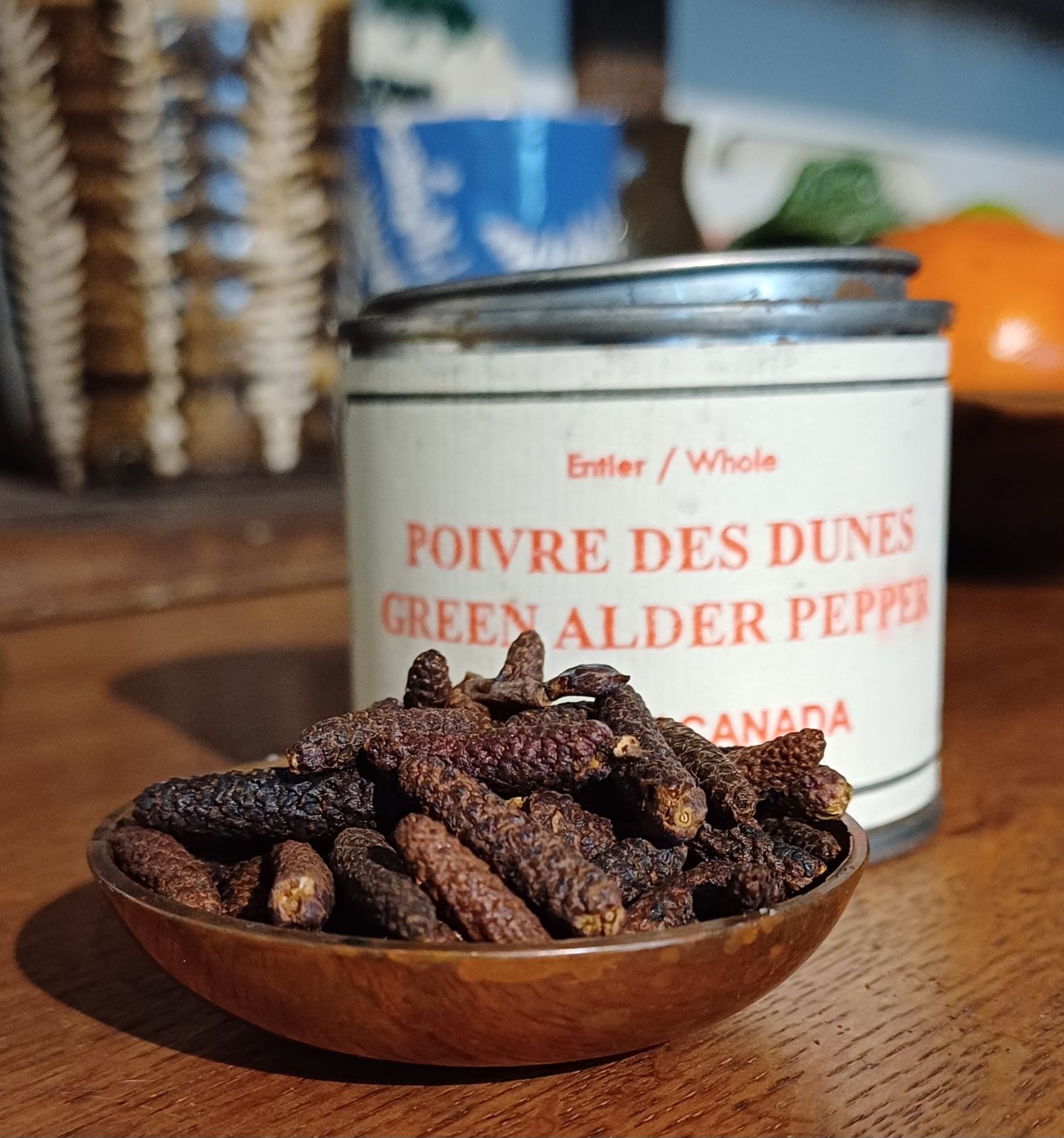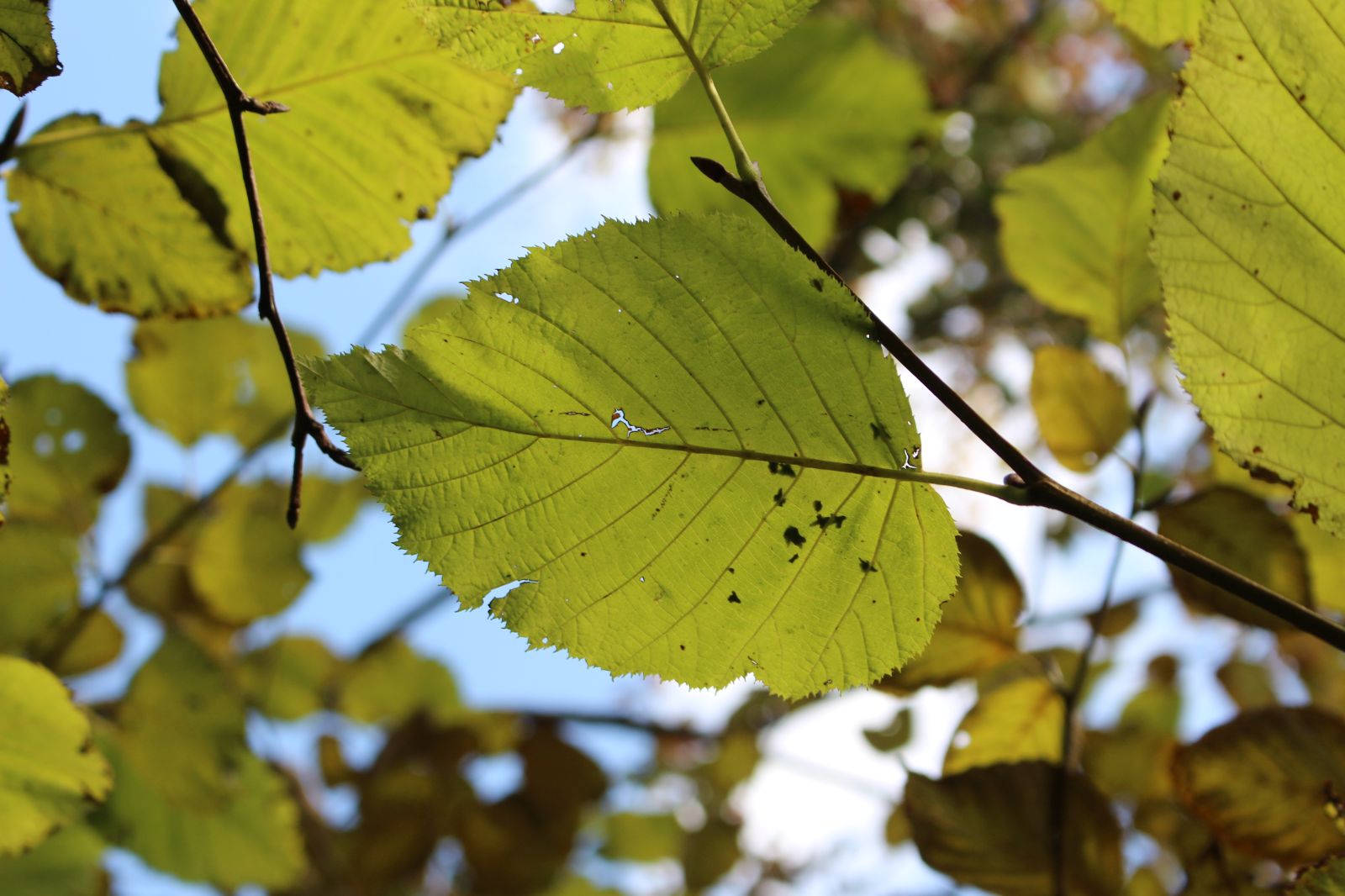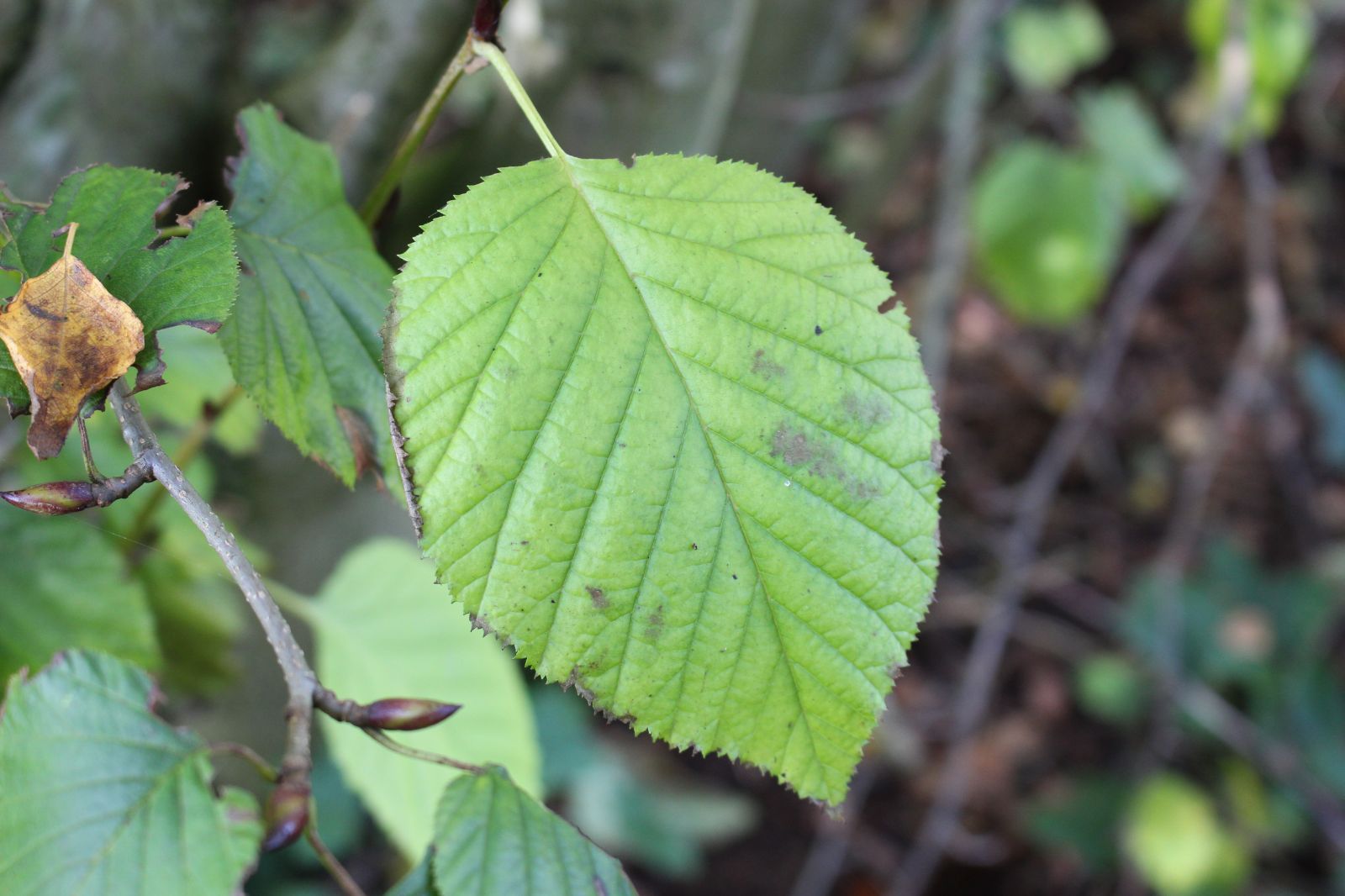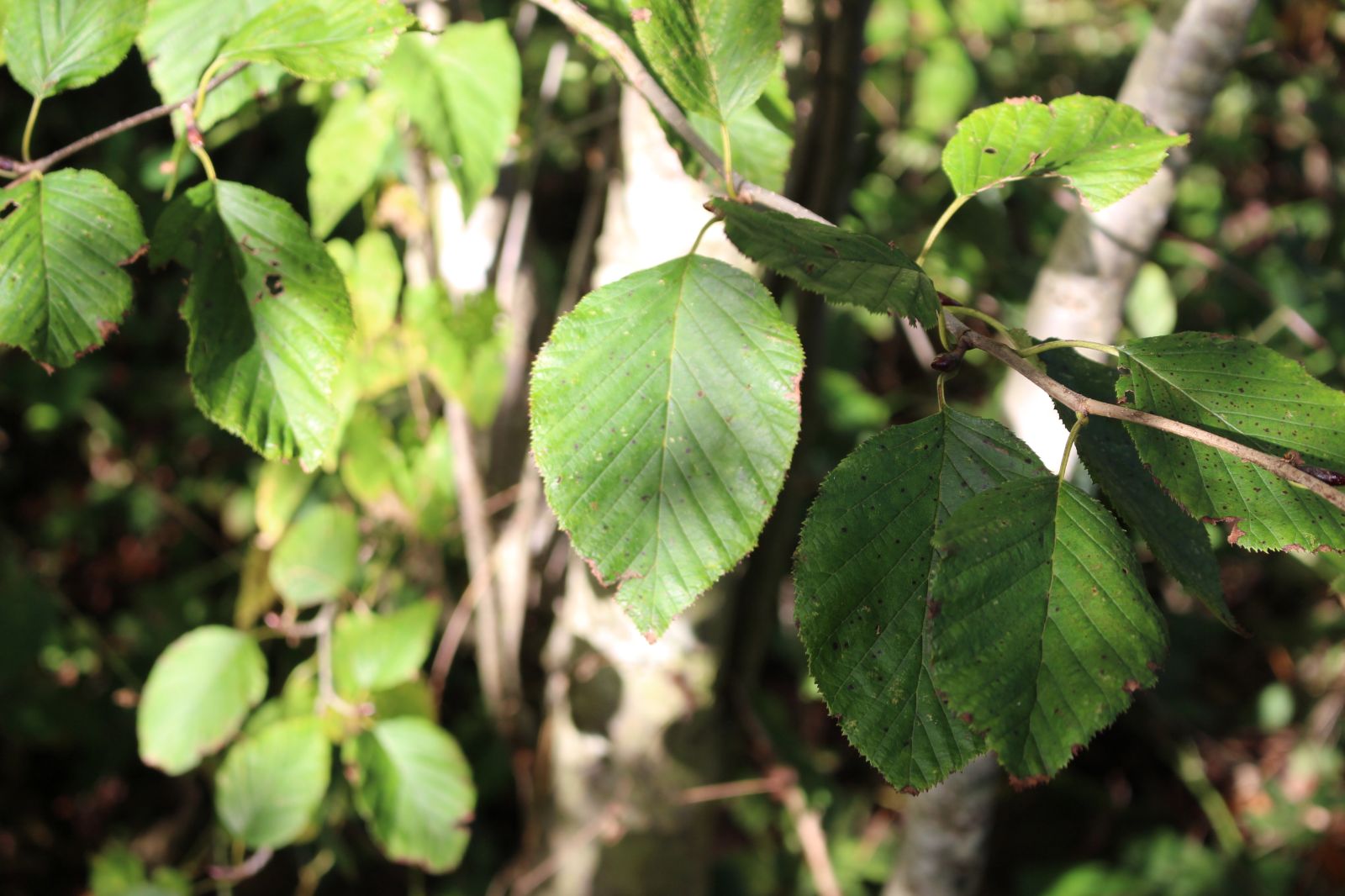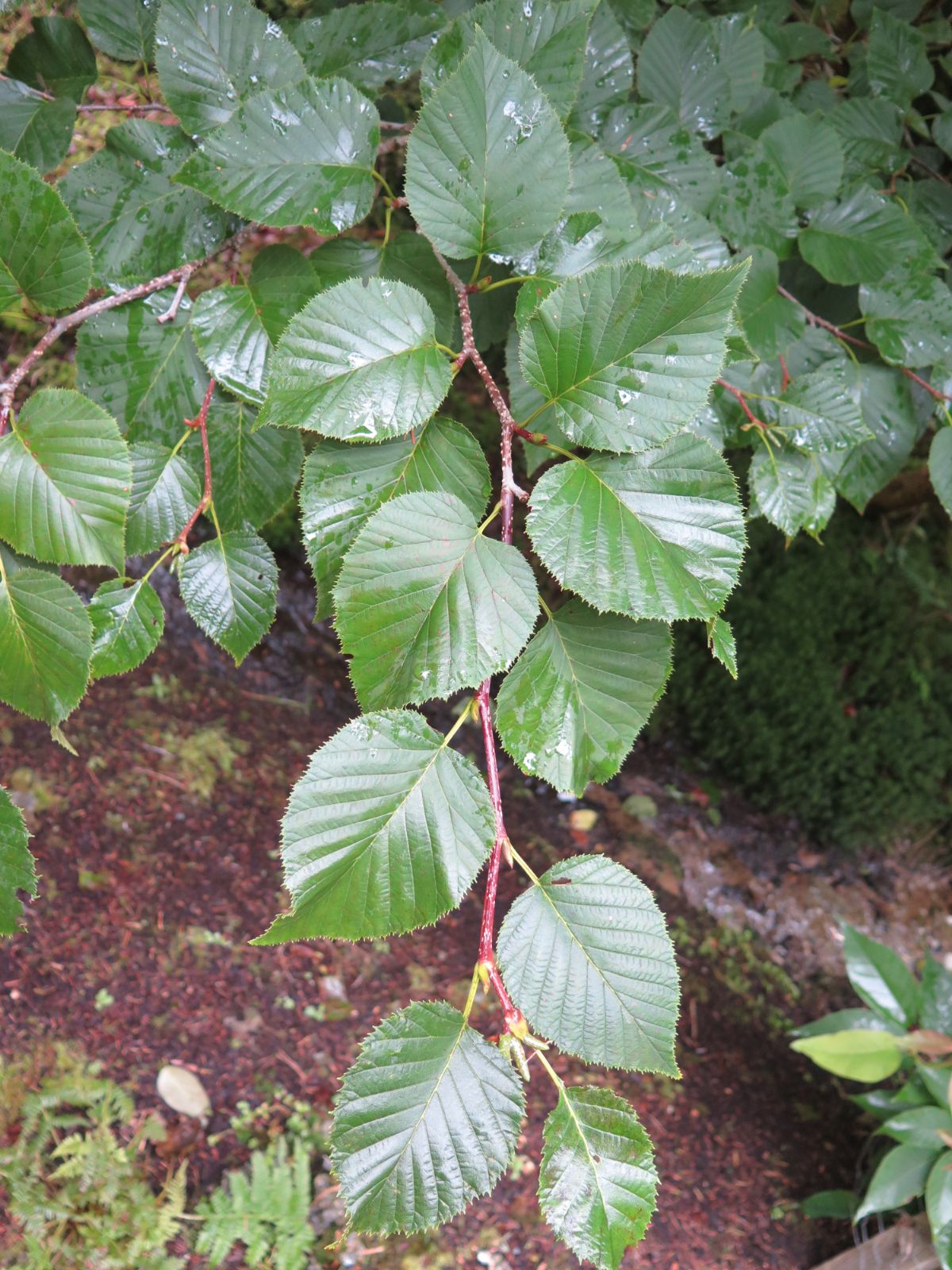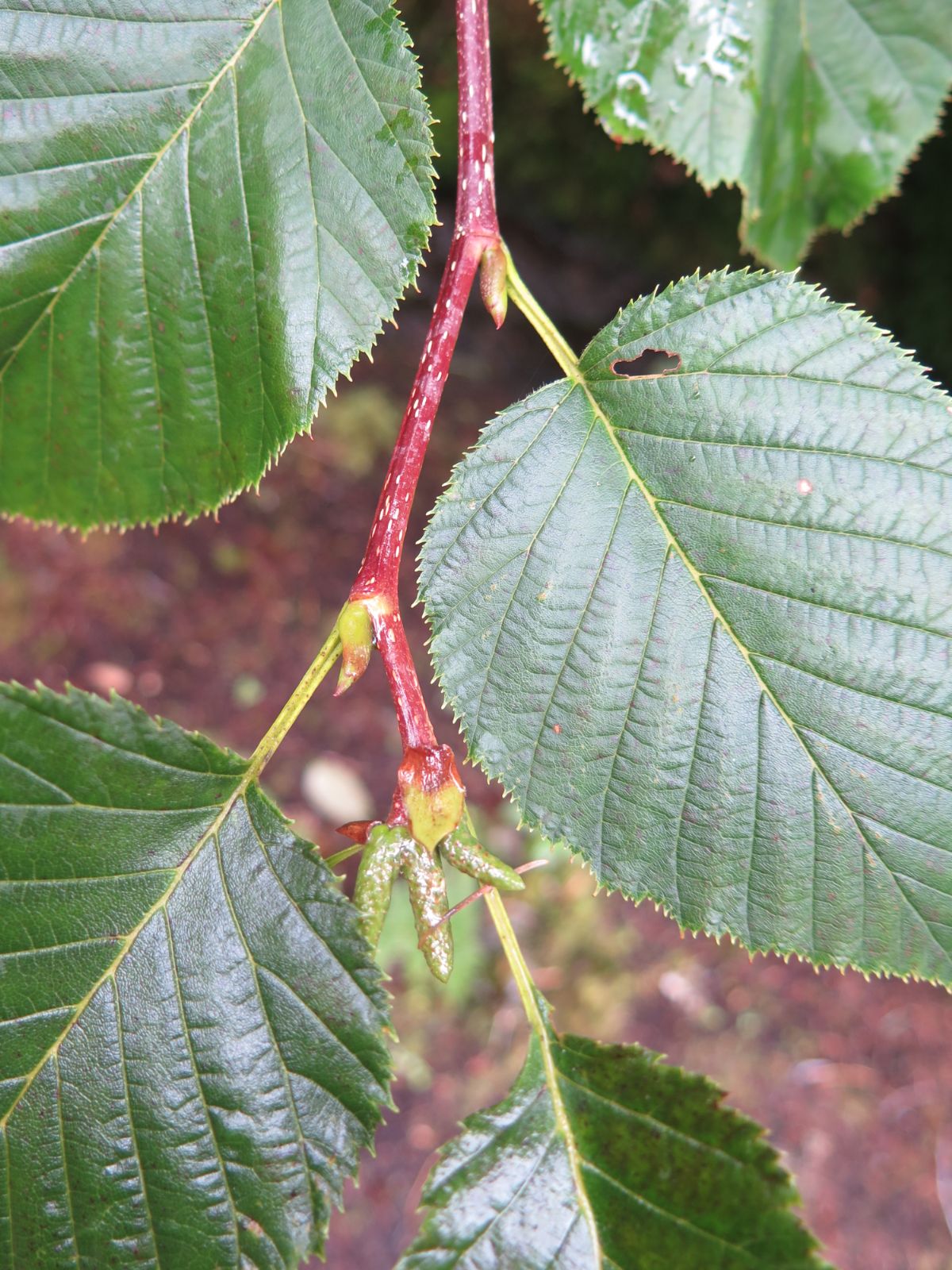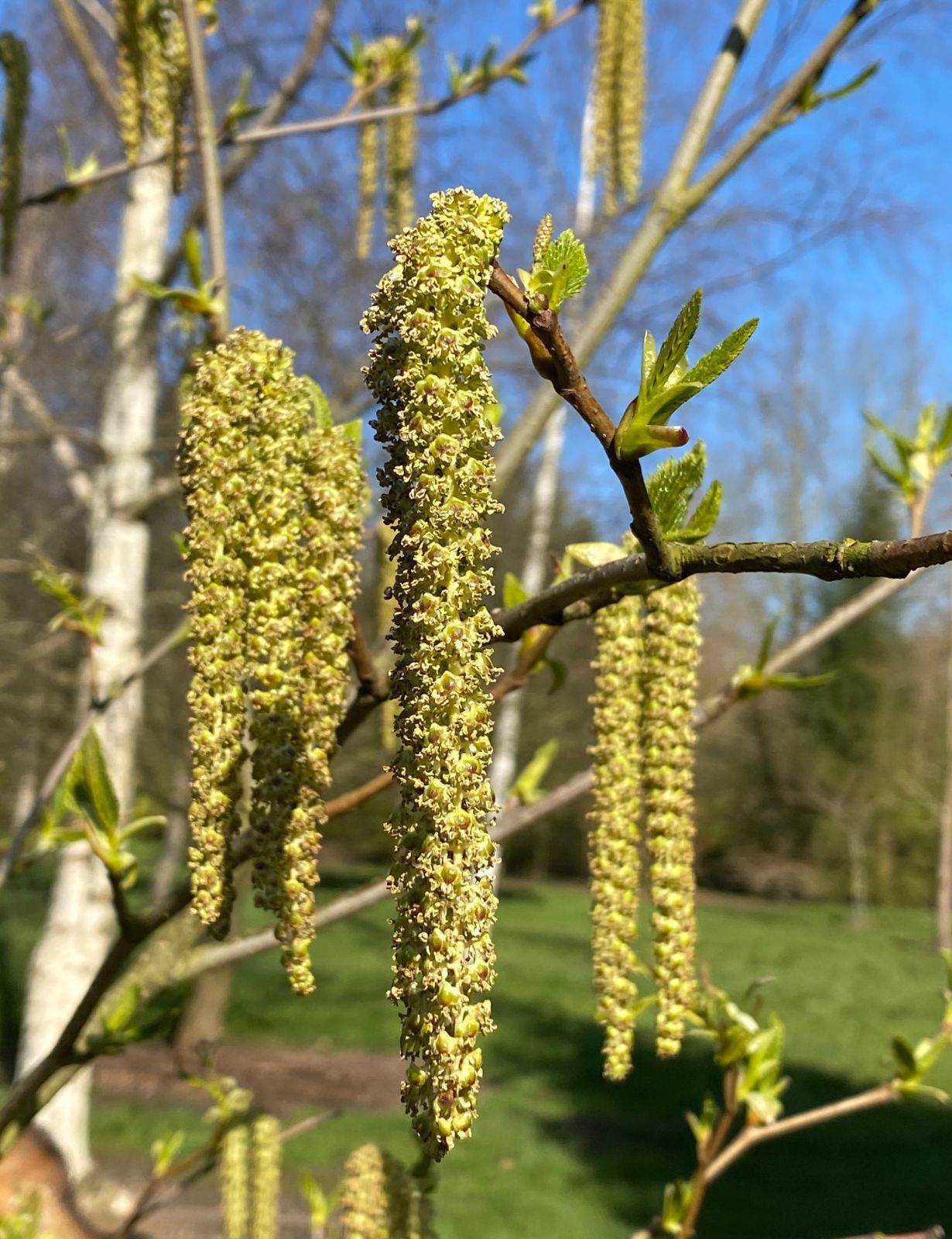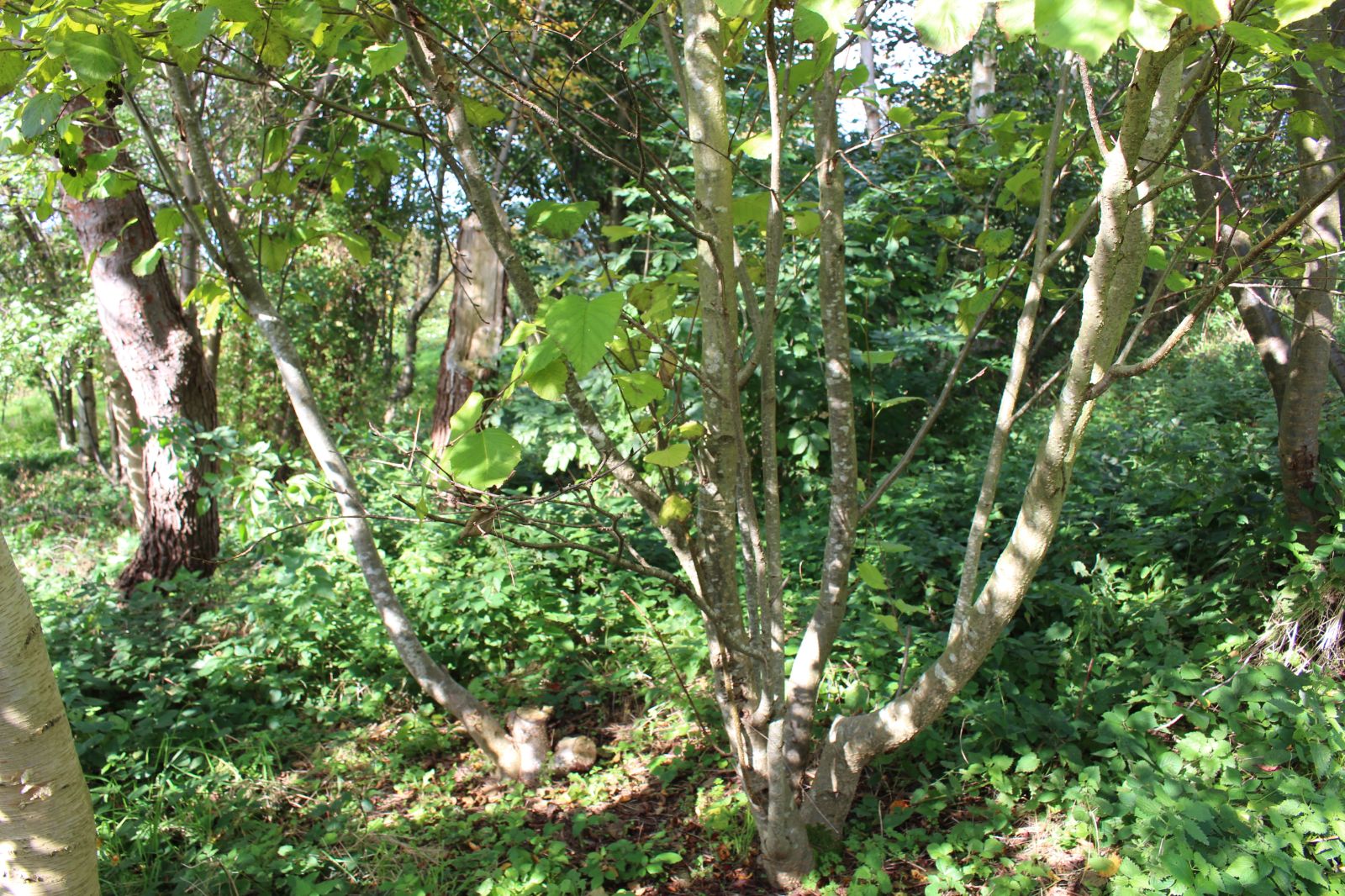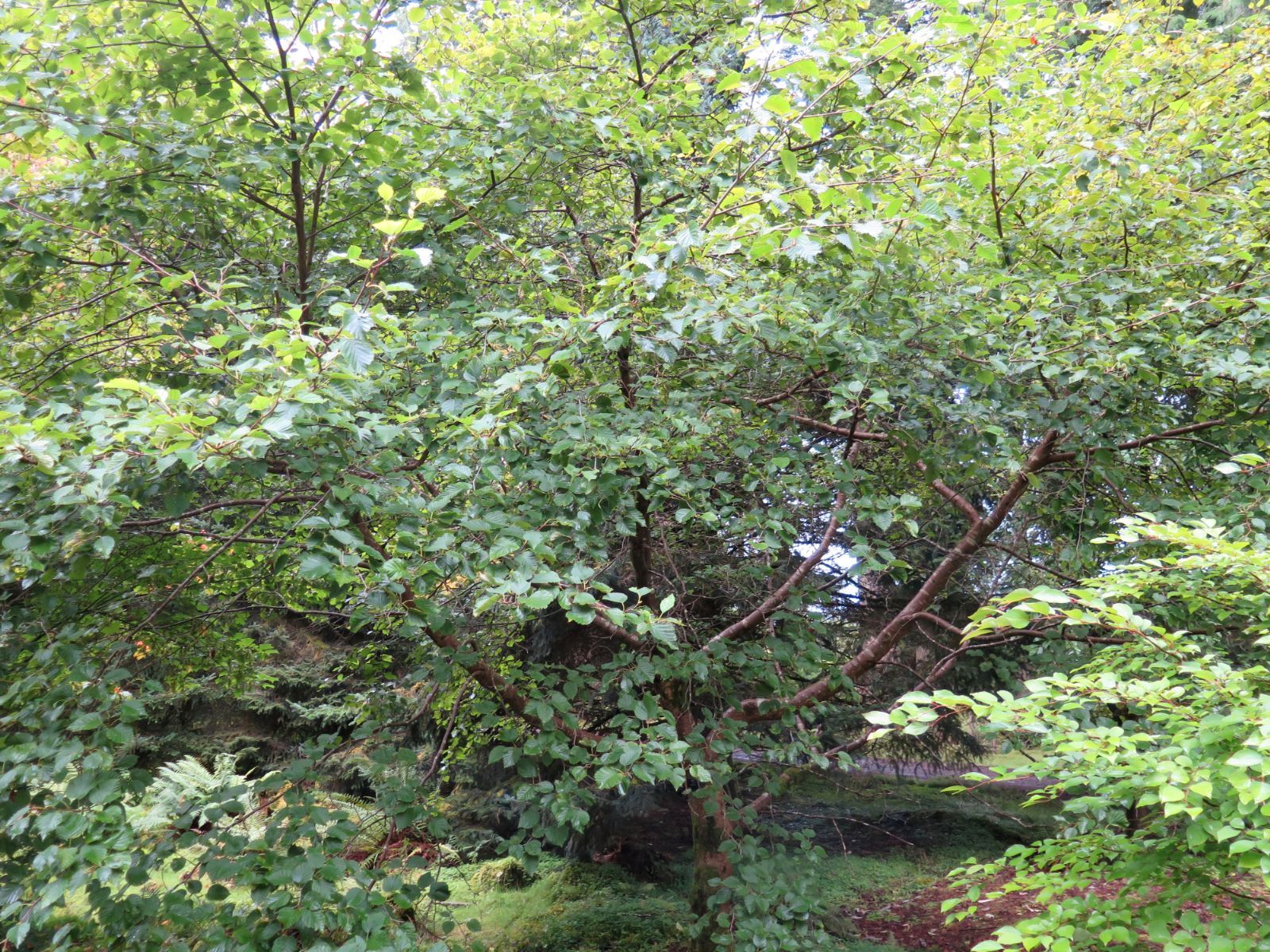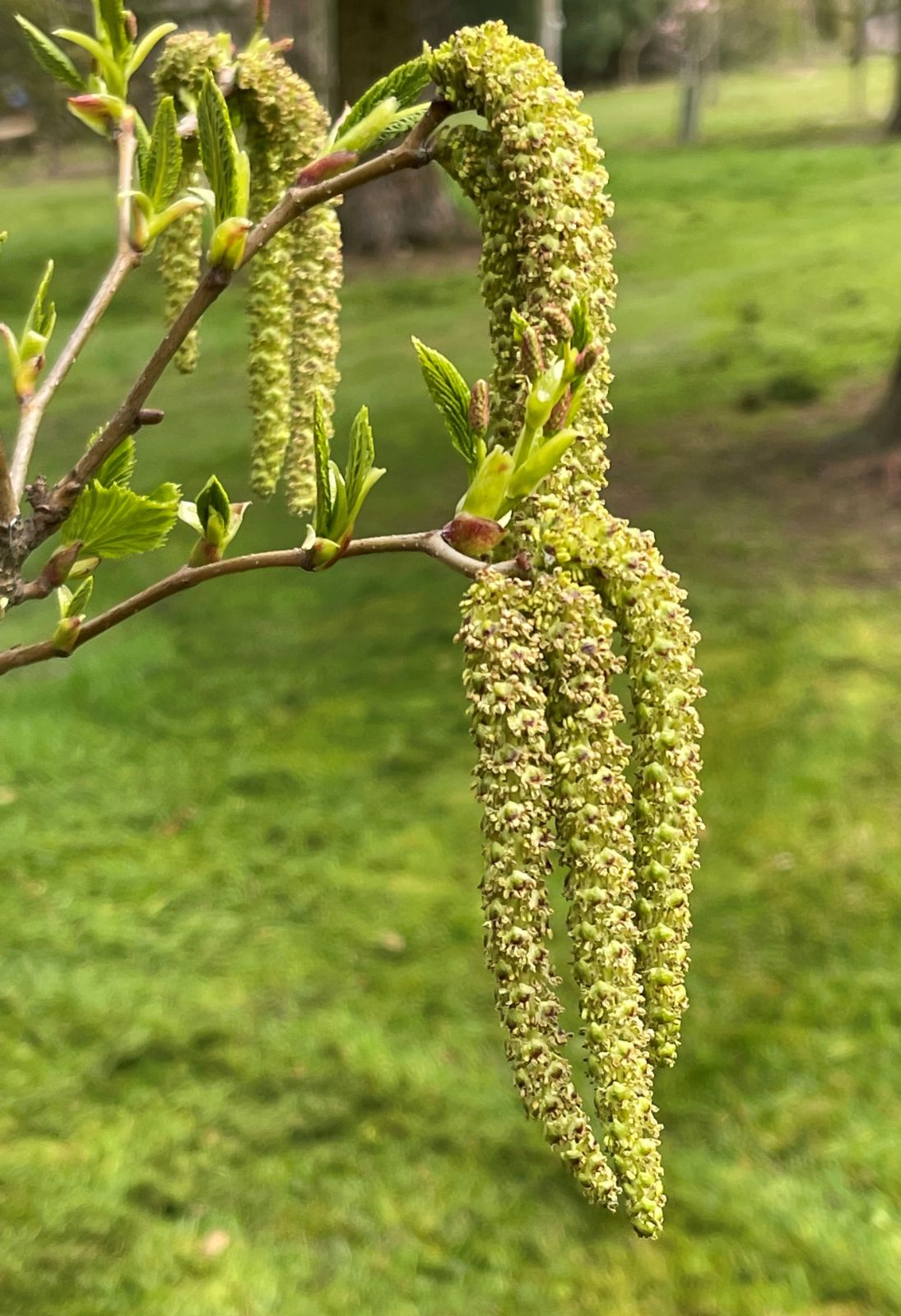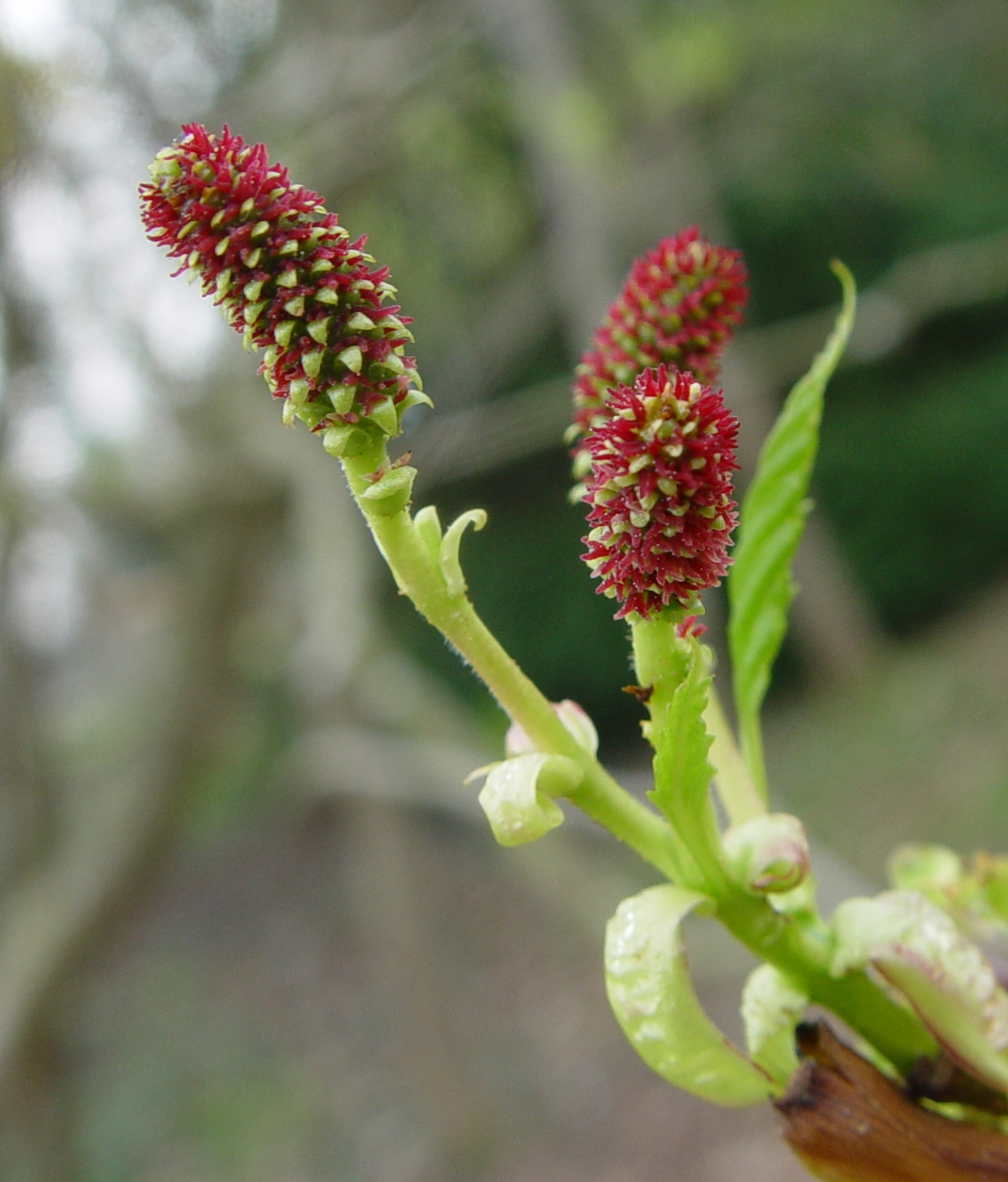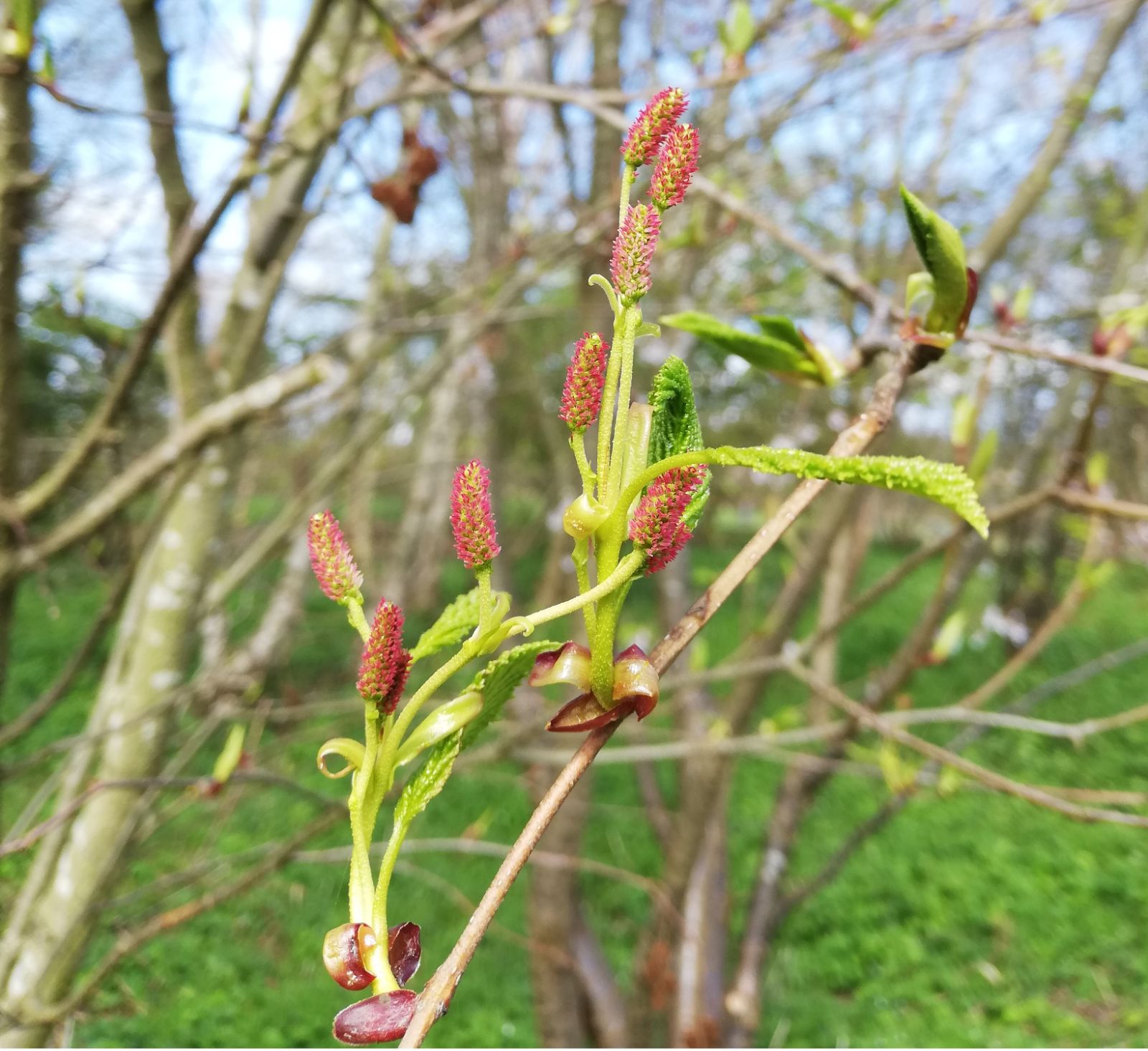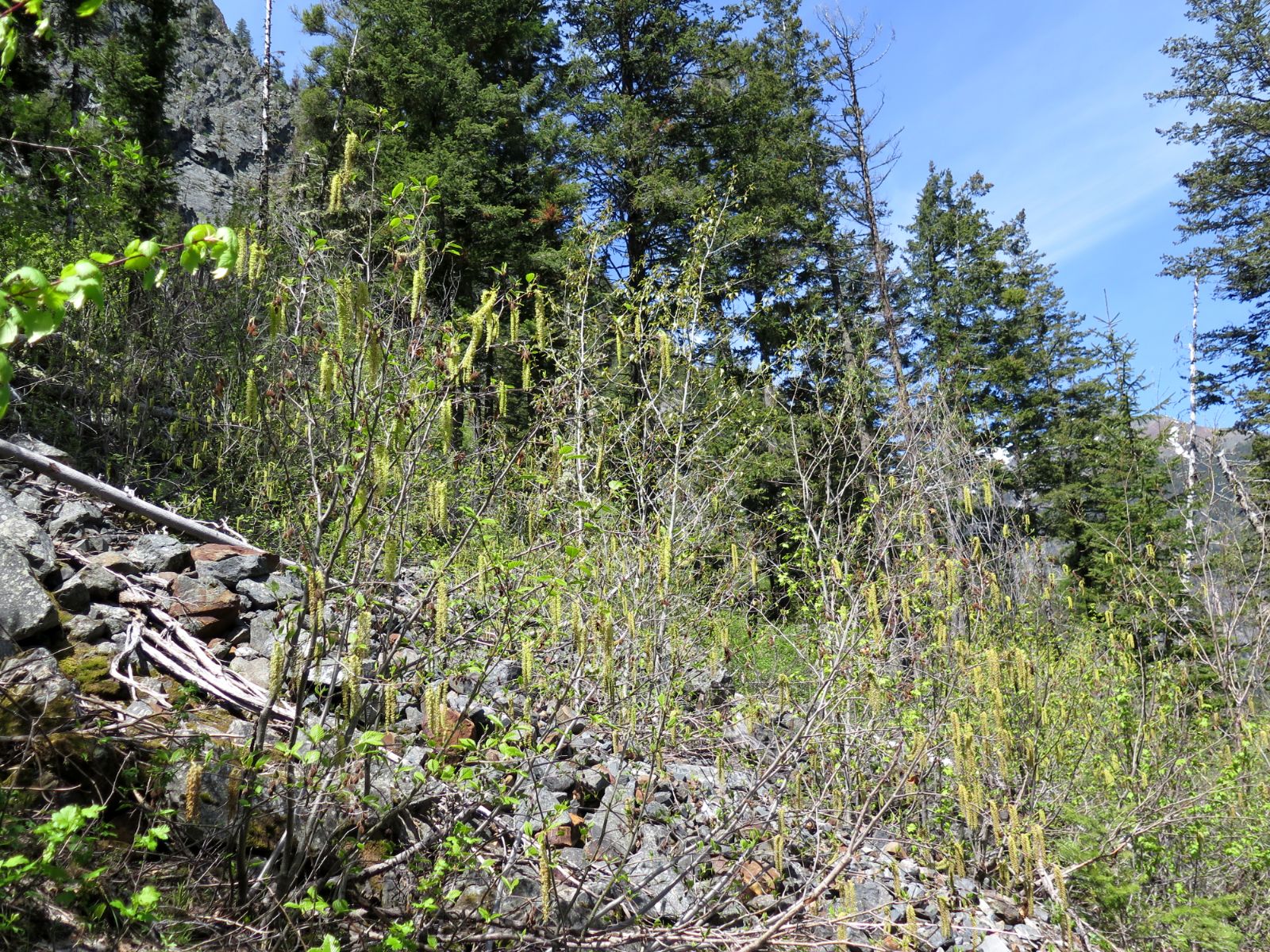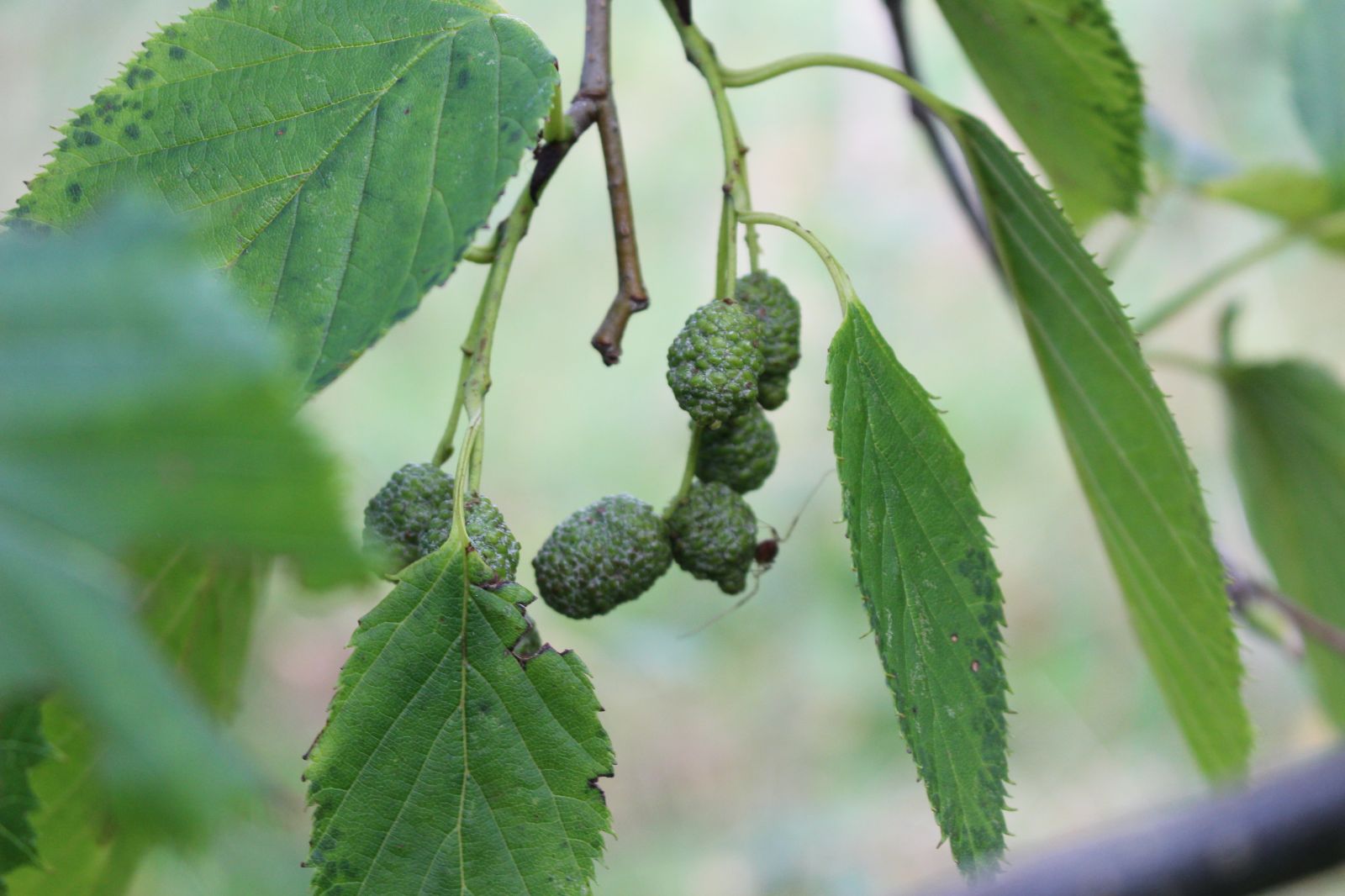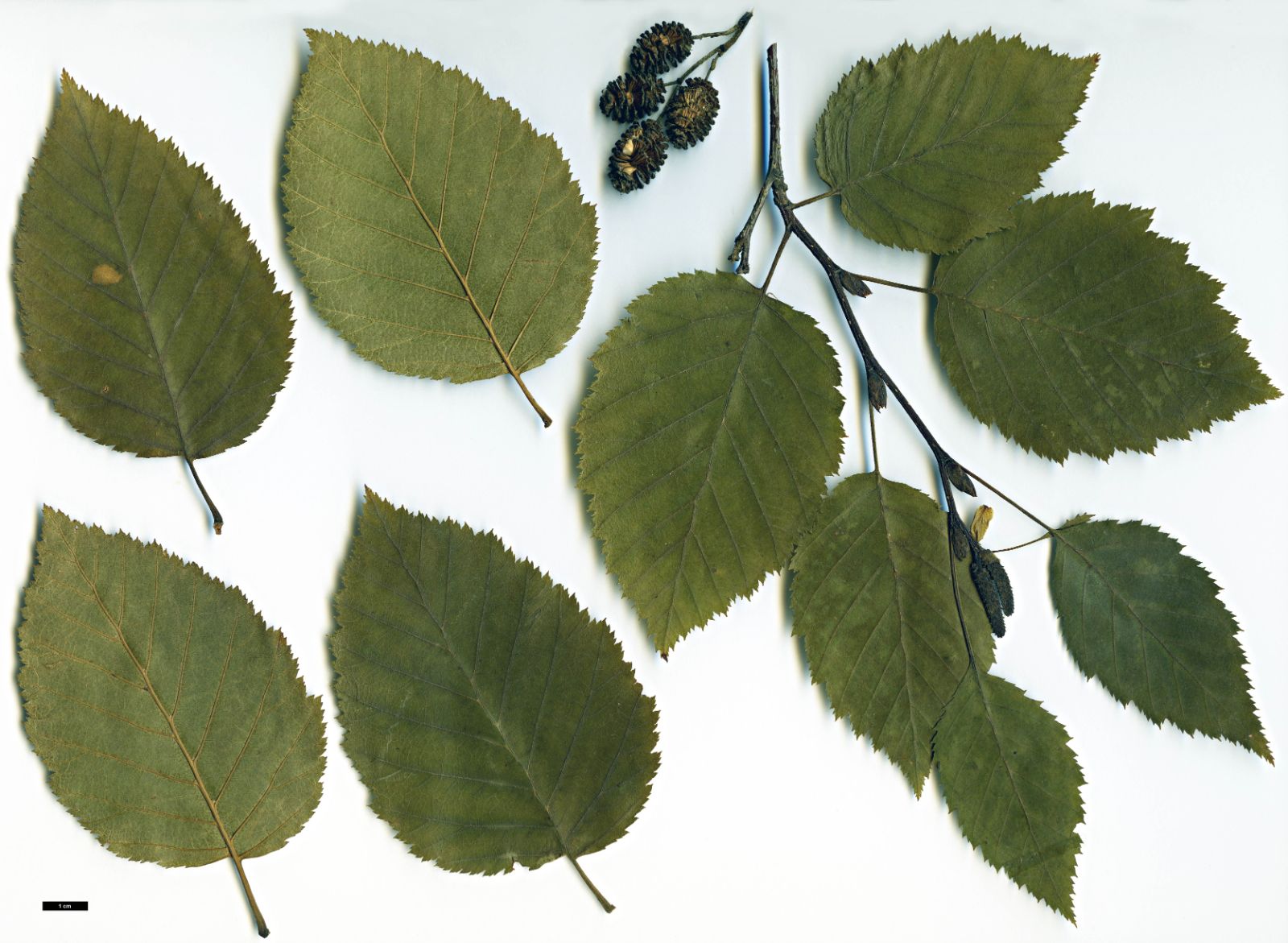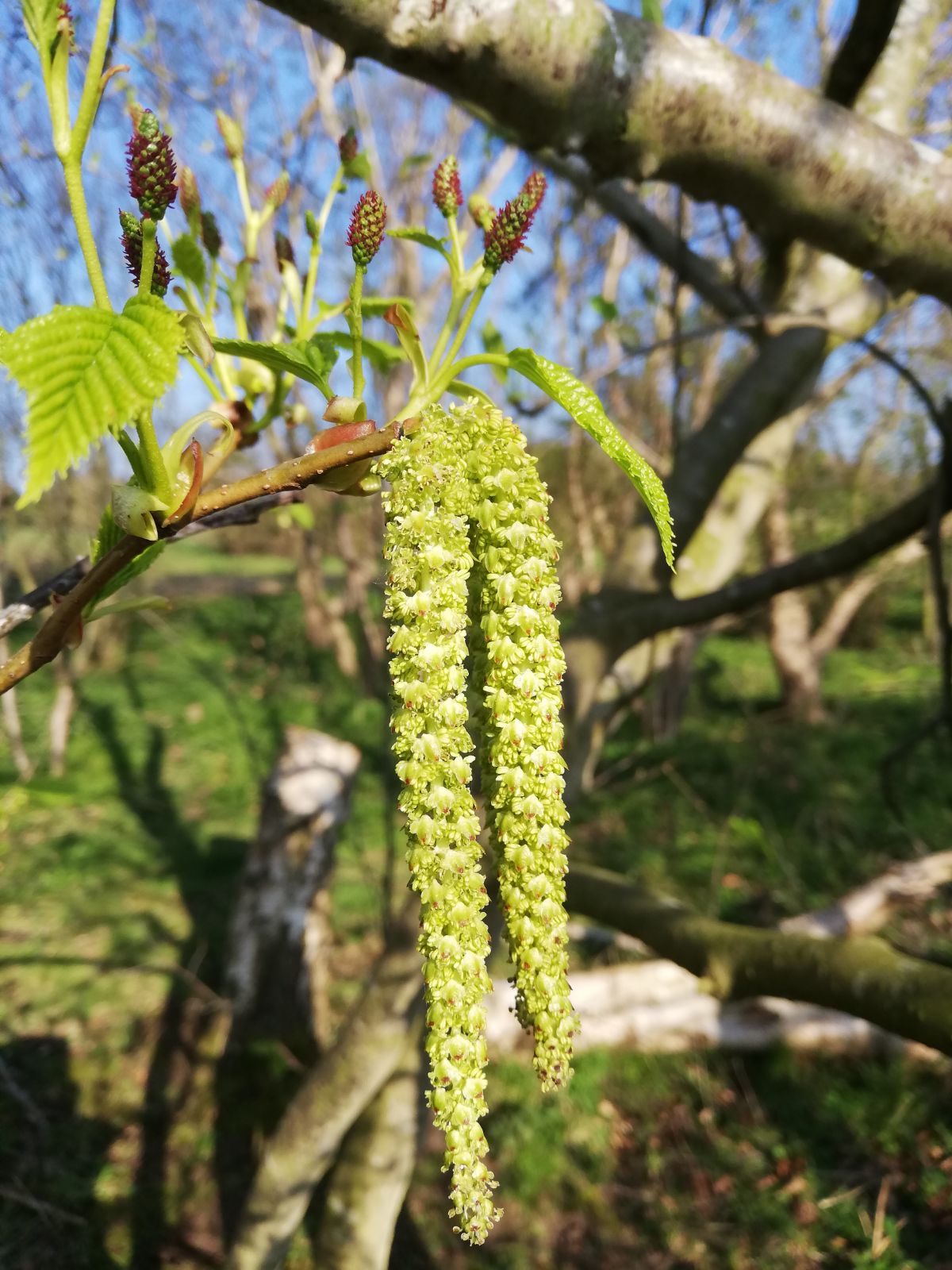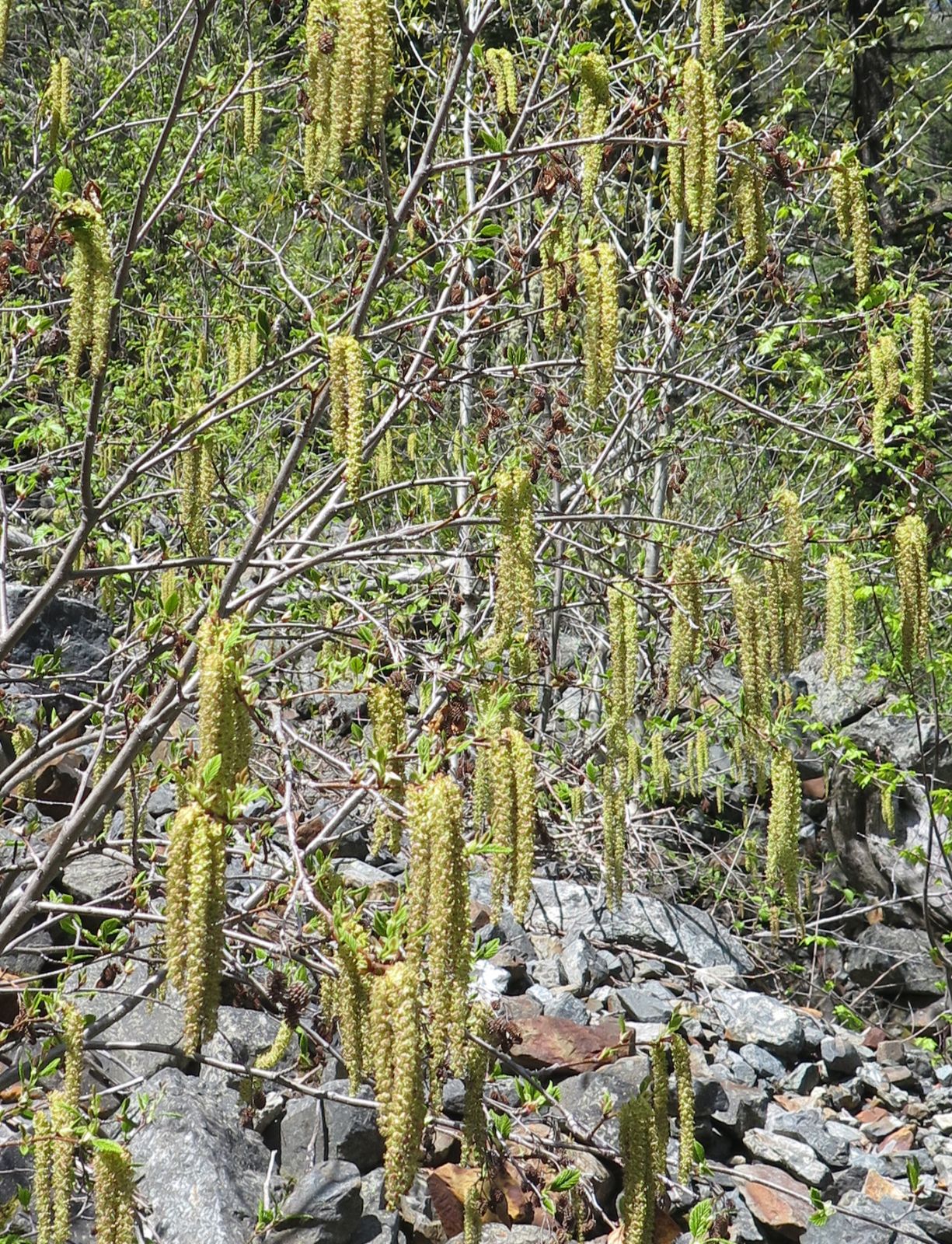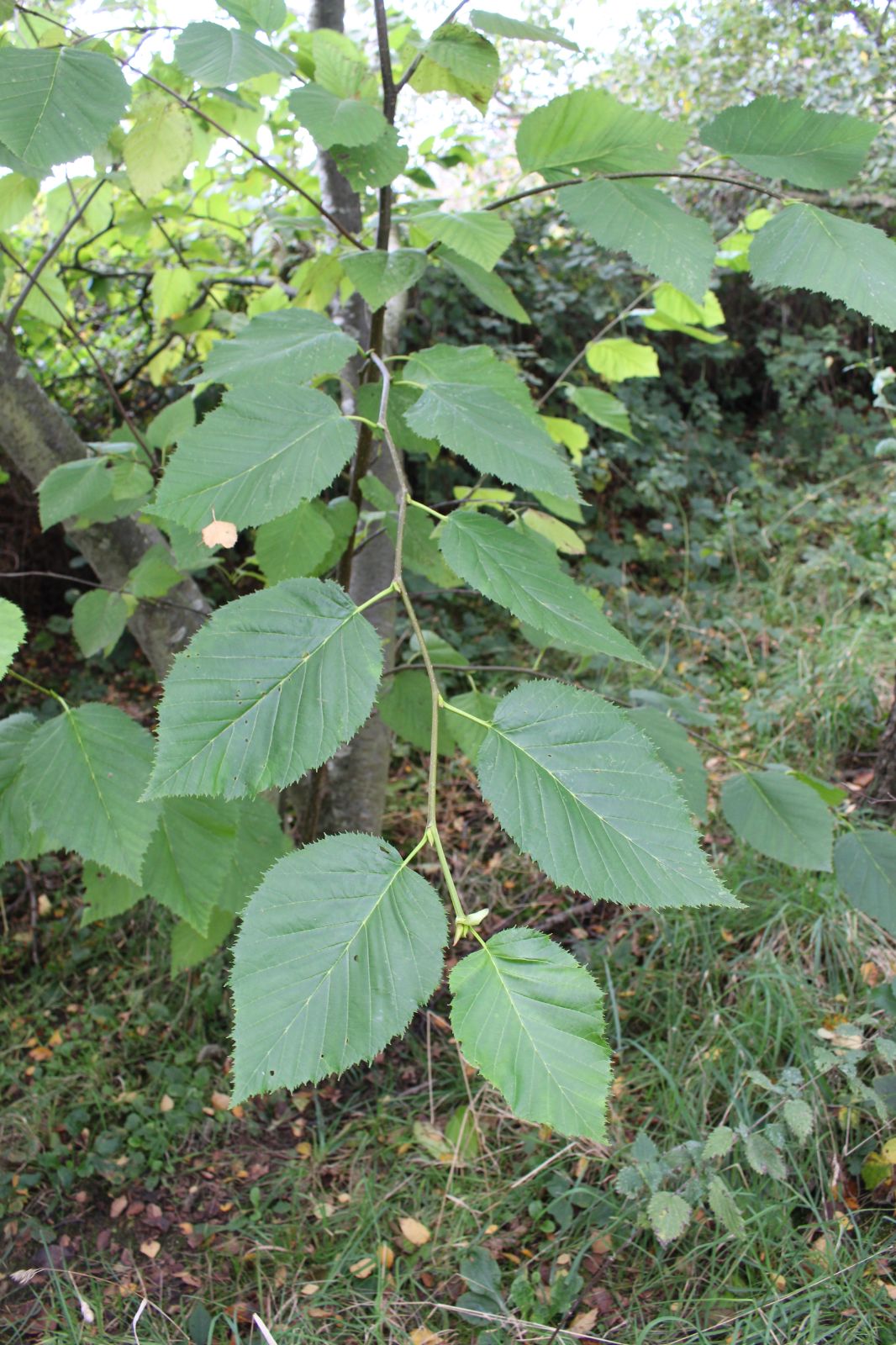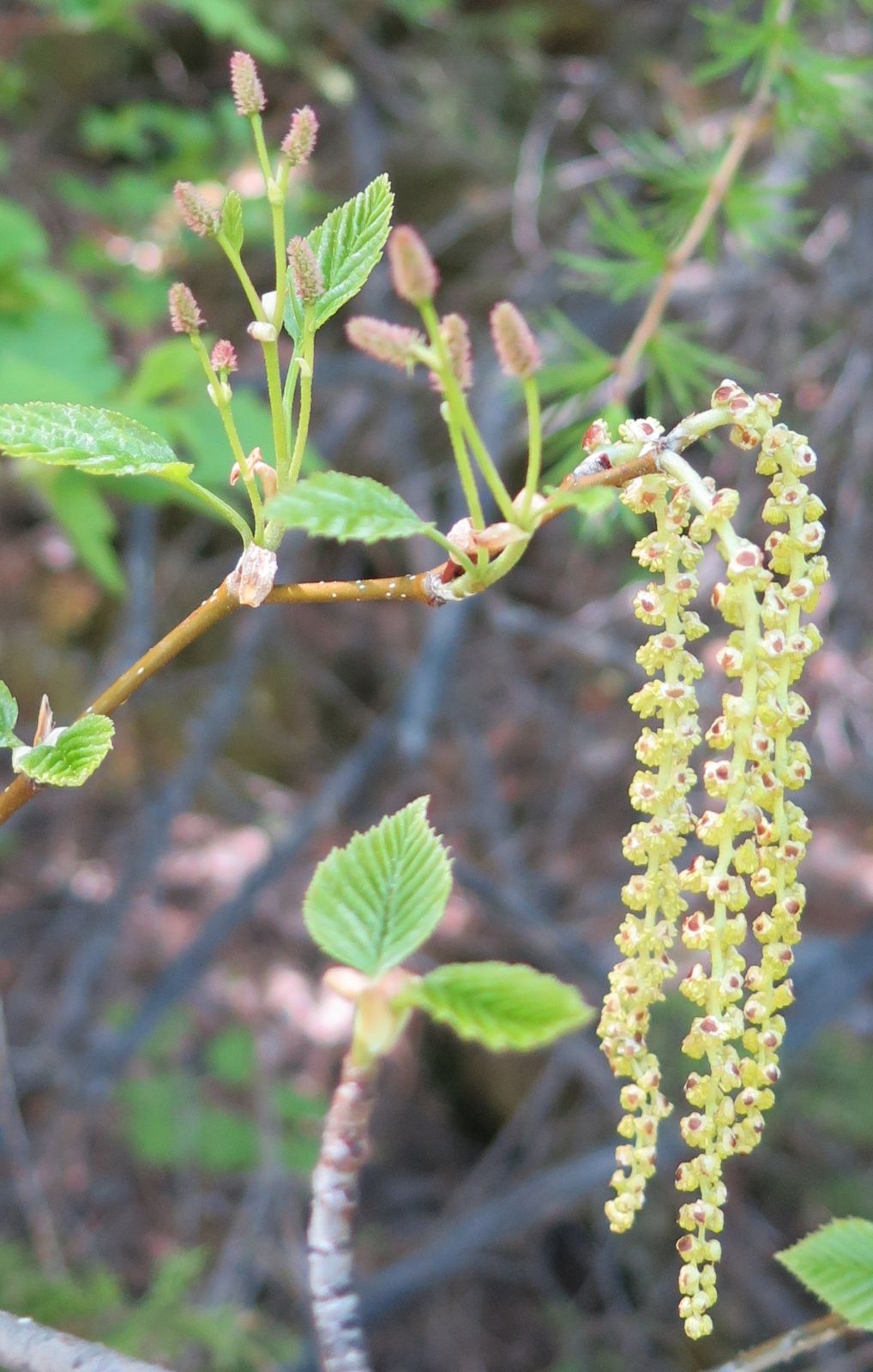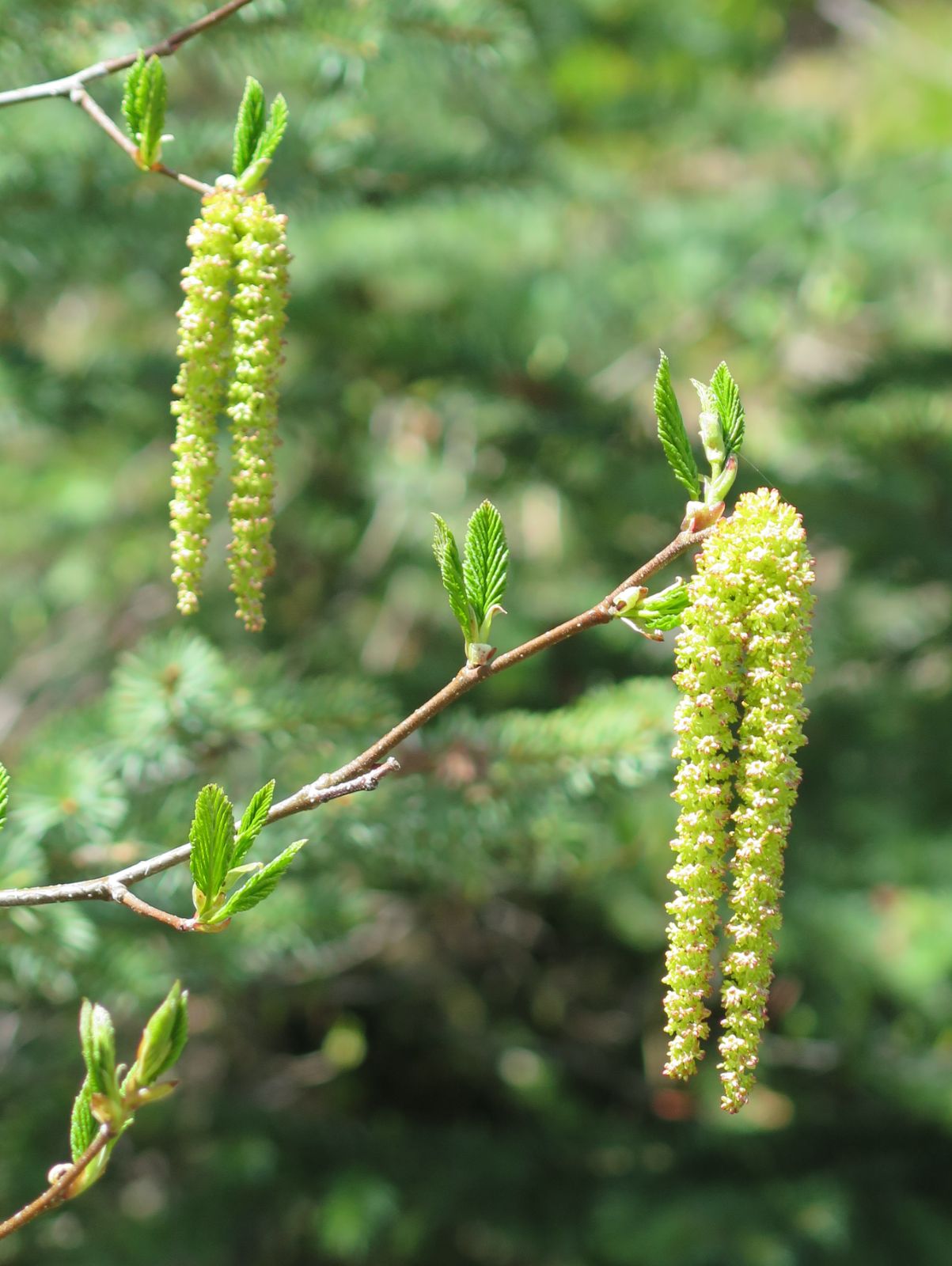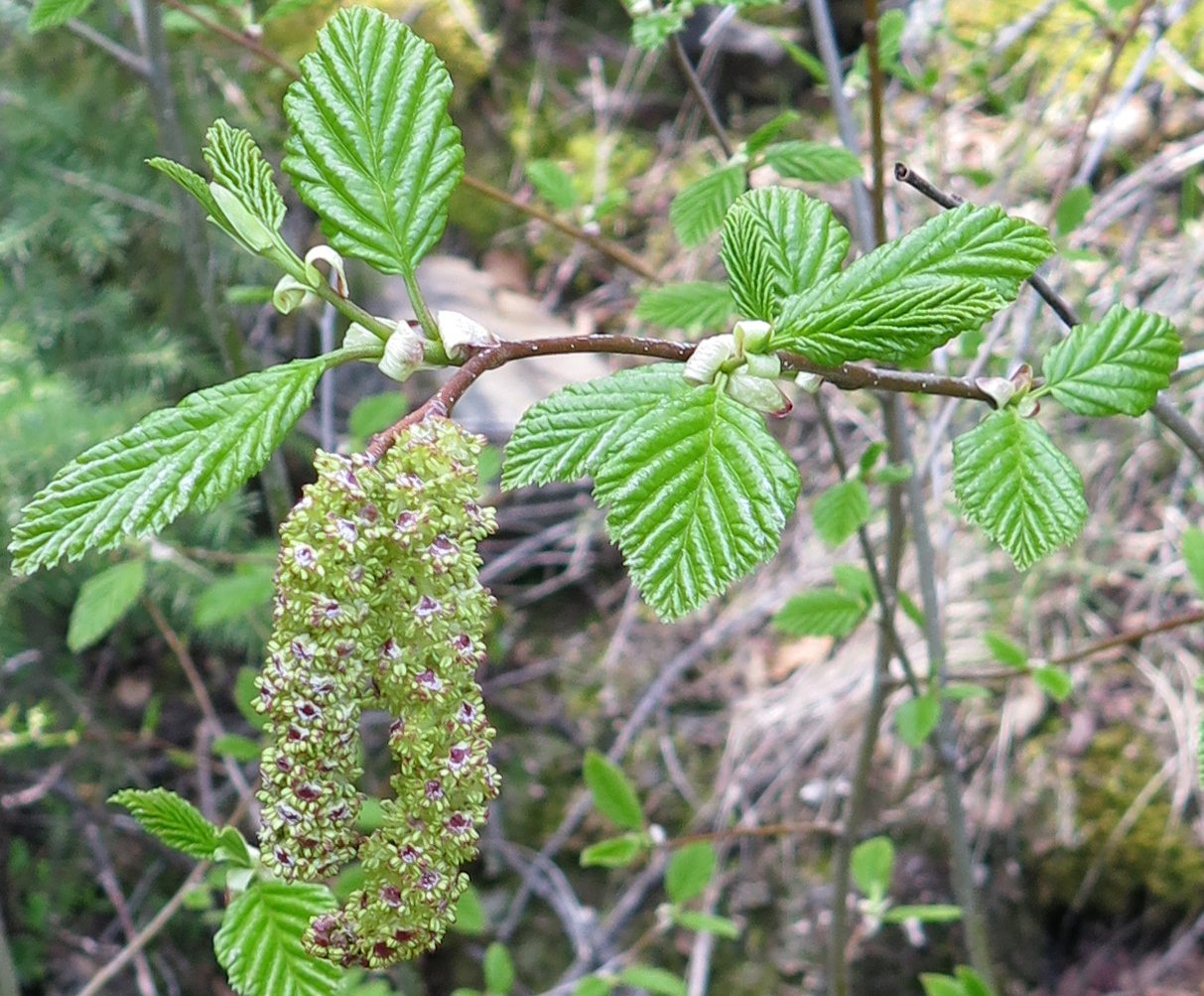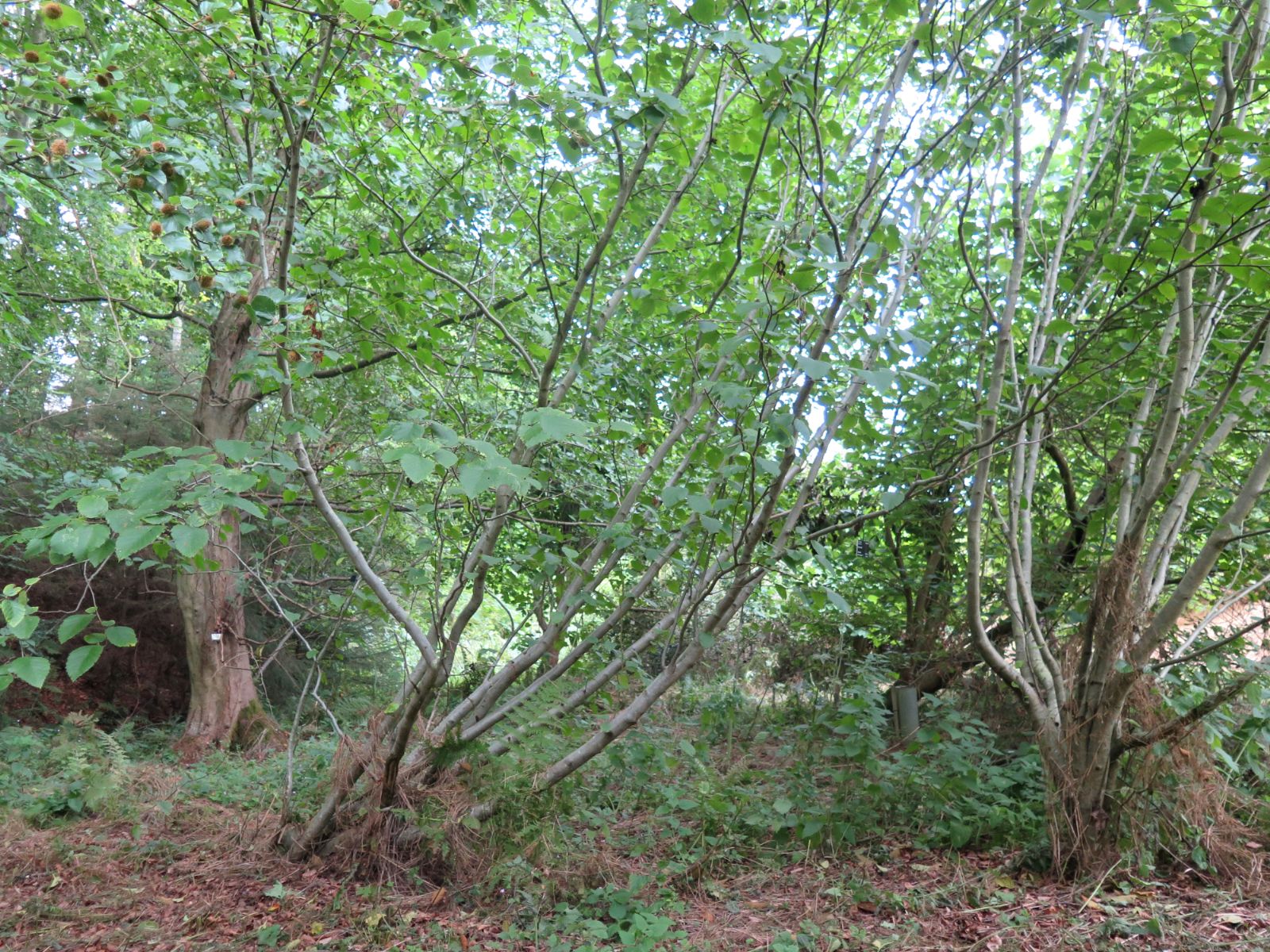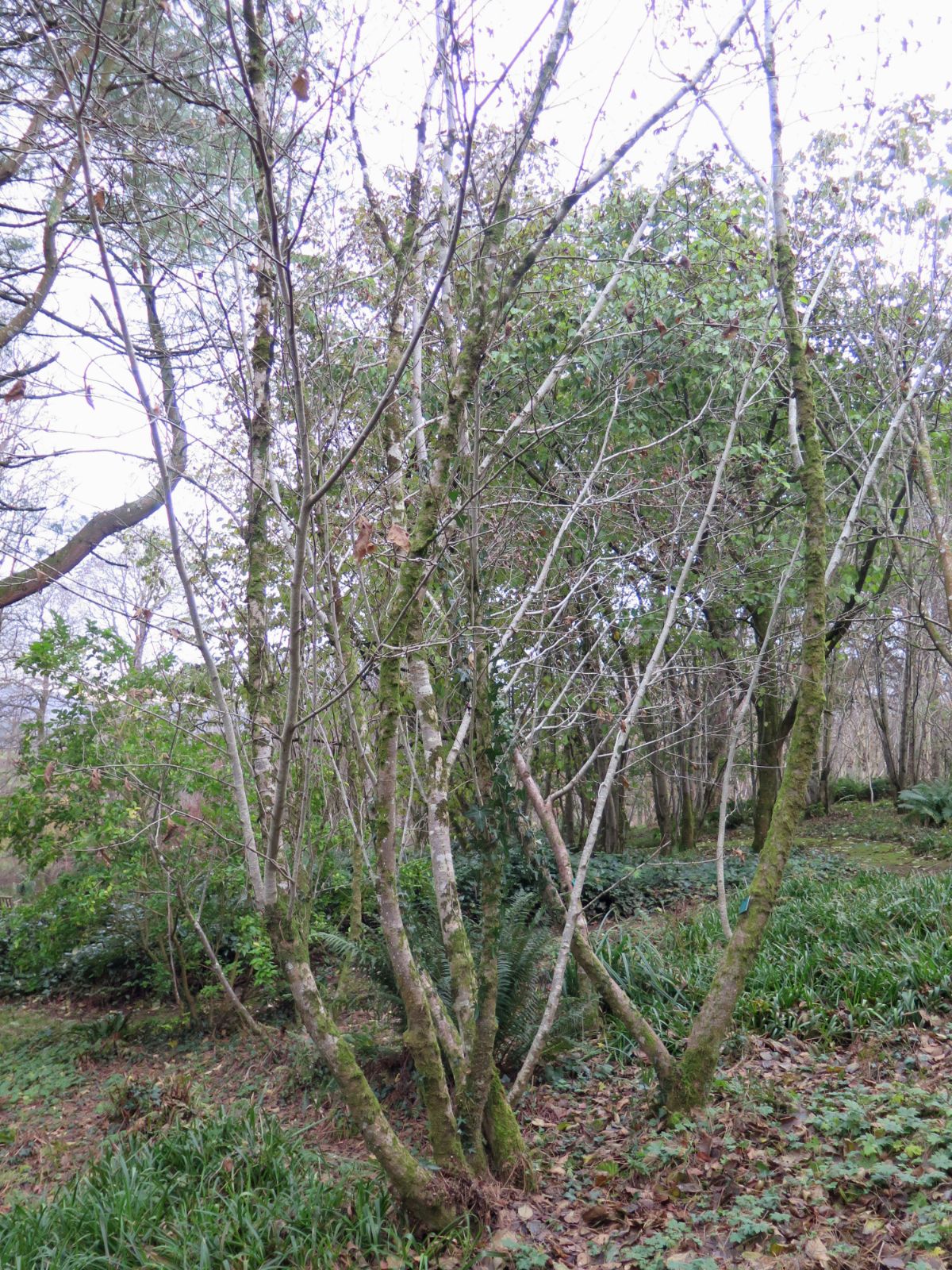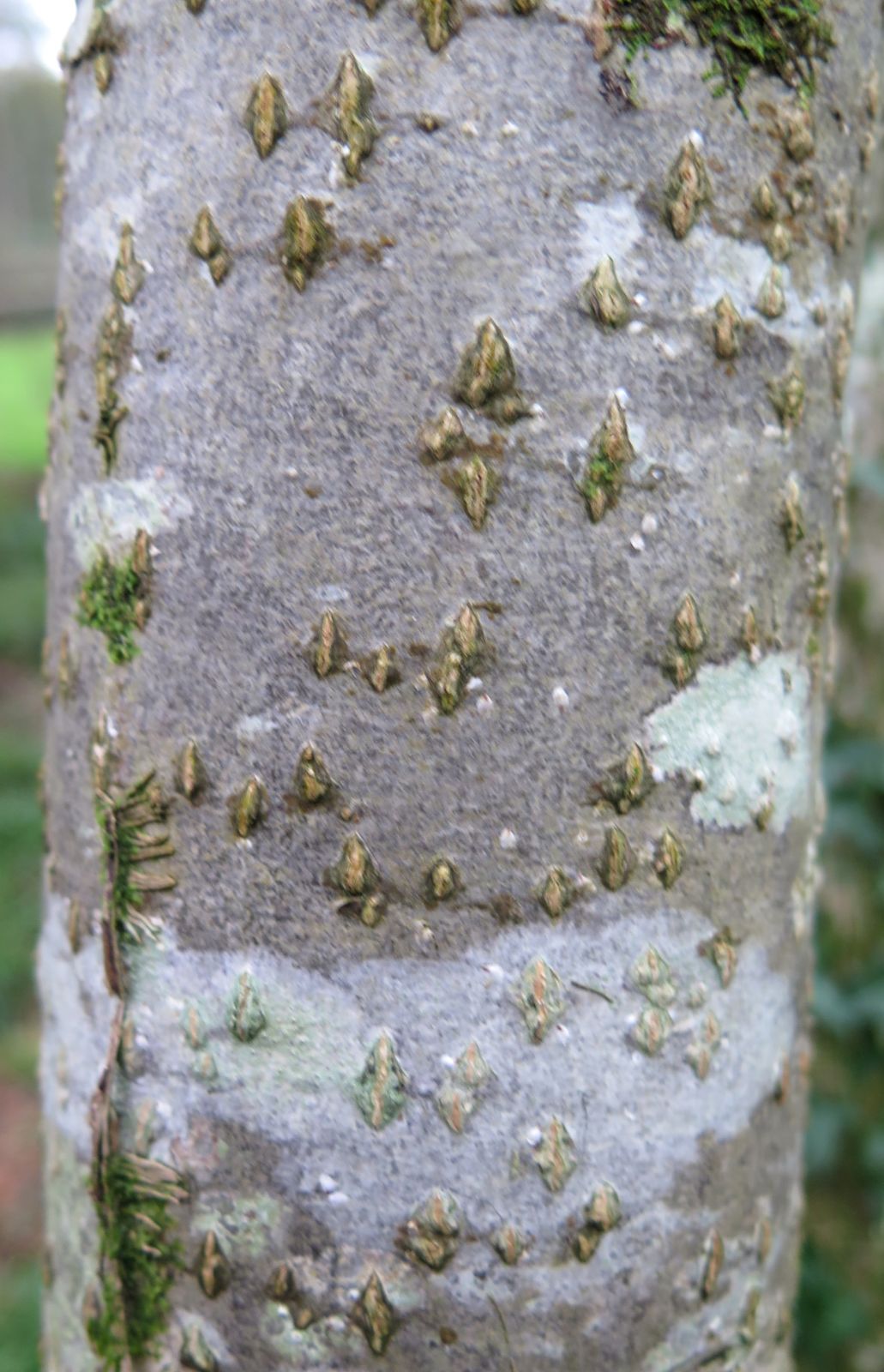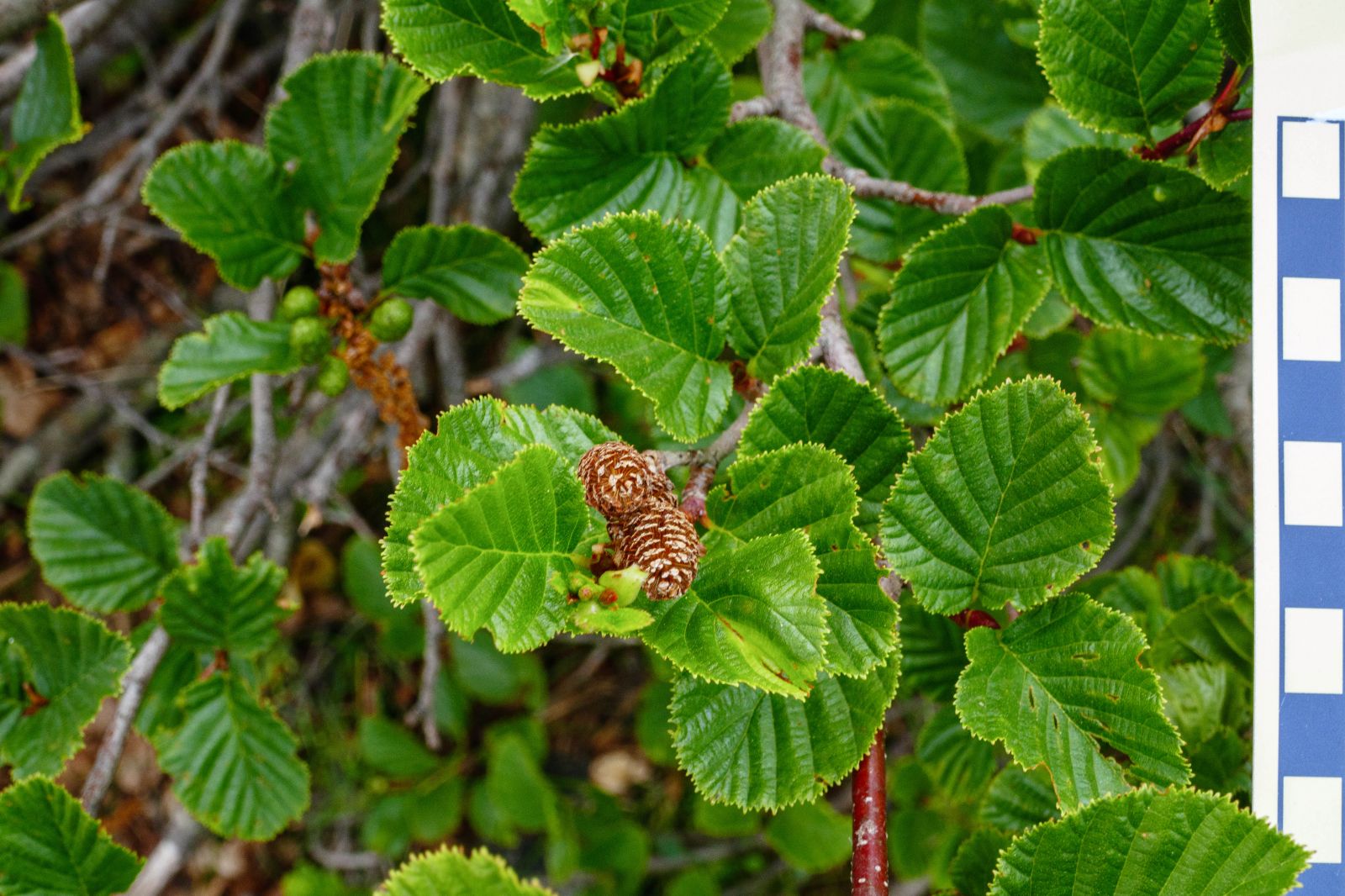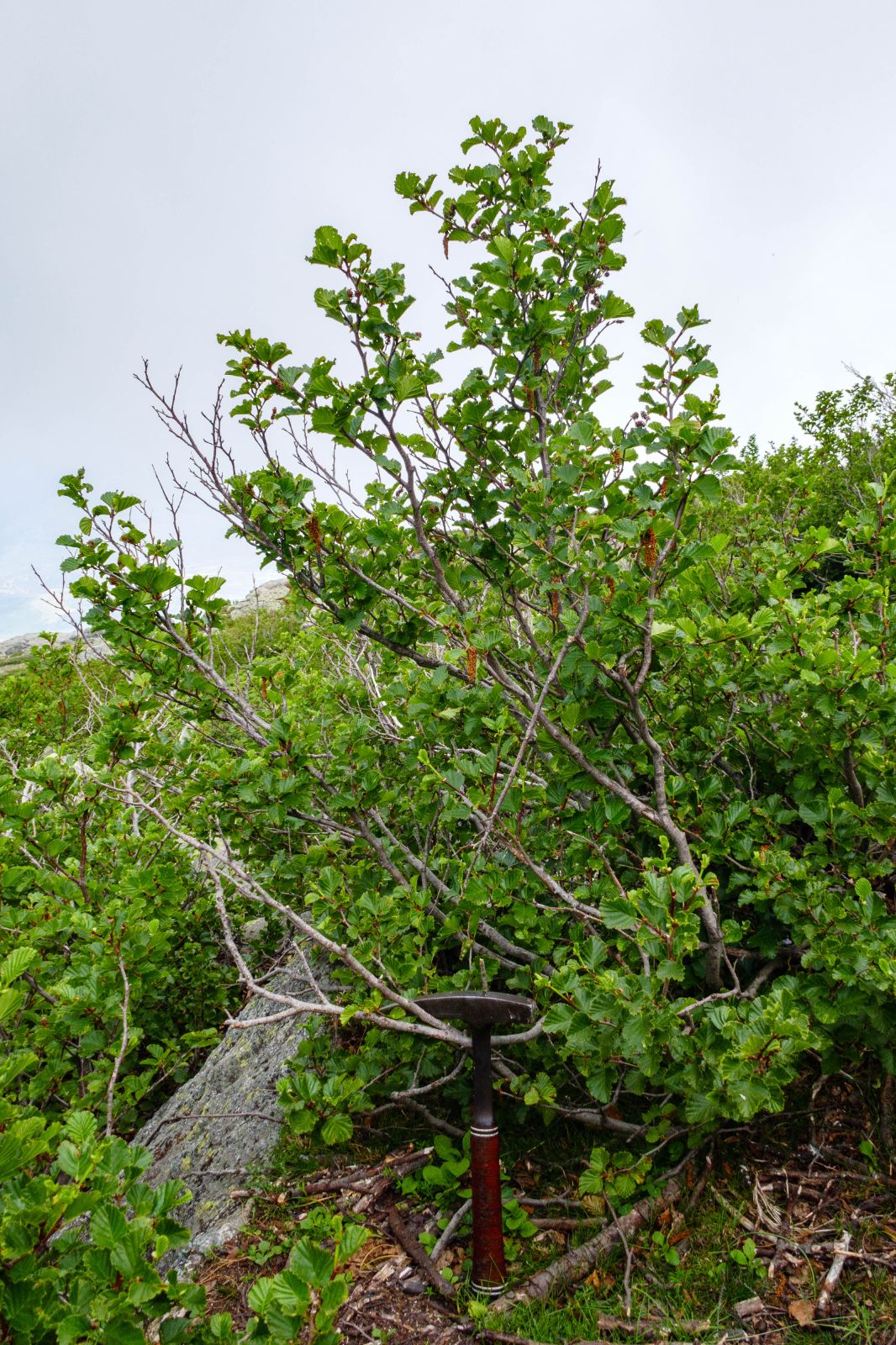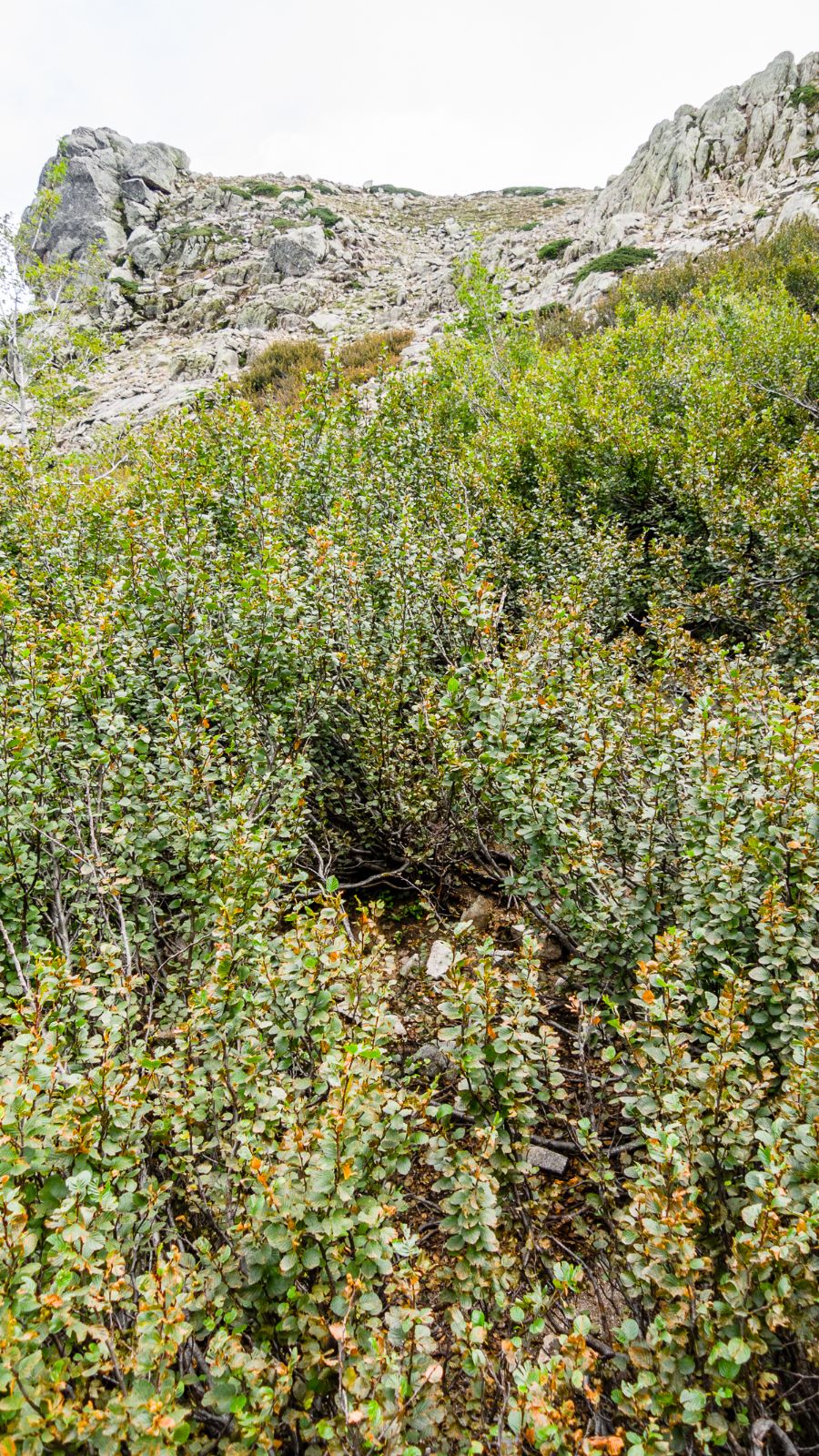Alnus alnobetula
Sponsor
Kindly sponsored by
a member of the International Dendrology Society
Credits
Tim Baxter & Hugh A. McAllister (2024)
Recommended citation
Baxter, T. & McAllister, H.A. (2024), 'Alnus alnobetula' from the website Trees and Shrubs Online (treesandshrubsonline.
Genus
- Alnus
- Subgen. Alnobetula, Sect. Alnobetula
Common Names
- Green Alder
Synonyms
- Alnus alpina Villars
- Alnus viridis (Chaix) DC.
- Betula alnobetula Ehrh.
- Betula ovata Schrank
- Betula viridis Chaix.
- Duschekia alnobetula (Ehrh.) Pouzar
Infraspecifics
Other taxa in genus
- Alnus acuminata
- Alnus betulifolia
- Alnus cordata
- Alnus cremastogyne
- Alnus djavanshirii
- Alnus dolichocarpa
- Alnus × elliptica
- Alnus × fallacina
- Alnus fauriei
- Alnus ferdinandi-coburgii
- Alnus firma
- Alnus formosana
- Alnus glutinosa
- Alnus hirsuta
- Alnus incana
- Alnus inokumae
- Alnus japonica
- Alnus jorullensis
- Alnus lanata
- Alnus lusitanica
- Alnus maritima
- Alnus matsumurae
- Alnus × mayrii
- Alnus nepalensis
- Alnus nitida
- Alnus oblongifolia
- Alnus orientalis
- Alnus pendula
- Alnus rhombifolia
- Alnus rohlenae
- Alnus rubra
- Alnus serrulata
- Alnus serrulatoides
- Alnus sieboldiana
- Alnus 'Sipkes'
- Alnus × spaethii
- Alnus subcordata
- Alnus trabeculosa
Multi-stemmed spreading shrub to 12 m, with prostrate to erect stems. Bark silvery grey to brown, with prominent whitish lenticels. Branchlets brown and often shiny, variously resinous, especially extension growth, hairy or not. Buds very short stipitate (to 1 mm), conical, green and typically slightly sticky with 4–6 revolute scales. Leaves narrowly to broadly ovate or elliptic; apex acuminate to obtuse; base acute to cordate; blade 2–16 × 1.3–13 cm, usually glutinous when young; unevenly serrulate to coarsely double-serrate; glabrous to pubescent above and below; 5–12 lateral vein pairs, often branching again near leaf base; craspedodromous, with weak tertiary veins. Petioles 3–26 mm long, glabrous to velutinous. Stipules ovate to elliptic. Pistillate inflorescences expanding from buds in spring, in clusters of 2–10 on short shoots below staminate inflorescences; erect, 5–8 mm long at anthesis, subtended by small leaves. Staminate catkins produced during the previous growing season and exposed over winter, in a terminal cluster of 2–4, erect and becoming pendulous at anthesis, 2.5–14 cm long. Fruit ovoid to ellipsoid, 8–23 × 4–16 mm, on long thin peduncles; scales 3–6 × 3–5 mm, thin, with evenly sized lobes. Seed 1.5–3 × 1–2 mm, elliptic, with persistent divergent styles; wings obovate and extending beyond fruit. (Tutin et al. 1972; Furlow 1979; Furlow 1982; T. Baxter pers. obs.).
Distribution Austria Belarus Bosnia and Herzegovina Bulgaria Canada China Croatia Czechia France Germany Hungary Italy Japan North Macedonia Mongolia Montenegro Poland Romania Russia Serbia Slovakia Slovenia Switzerland Ukraine United States Greenland
Habitat Diverse habitats including streamsides, rocky outcrops, open coniferous woods, and bogs, from coastal to high latitude subalpine zones to 2500 m asl. It is tolerant of a wide range of soils including wet, sandy, rocky, and otherwise poor soils. It is a major colonising species associated with avalanche chutes in mountains across its range.
USDA Hardiness Zone 4-8
RHS Hardiness Rating H6
Awards Plants for pollinators
Conservation status Least concern (LC)
The Green Alder has long been known as Alnus viridis. However, the less familiar but valid, prior name A. alnobetula is now becoming accepted. These shrubby plants form a taxonomically challenging complex distributed across the north of the northern hemisphere.
The most workable taxonomic solution is to treat these plants as belonging to just one highly variable species, comprising more or less stable regional variants treated as subspecies (Banaev & Adel’shin 2009). Similar issues are seen in Betula (McAllister & Ashburner 2013), another wind pollinated, widely distributed northern genus. Reticulate evolution seems to have occured in both genera, with populations becoming isolated, diverging genetically, then re-joining and hybridizing, with repeated shifts in their ranges, primarily a result of the Pleistocene climatic upheavals. Each geographical region clearly has distinct morphological forms, varying only in minor details such as leaf characters. The most distinct forms are often associated with known Pleistocene refugia either side of the Bering Sea, in Japan, and in the northeastern USA, yet they still interbreed and intergrade where their ranges overlap. We recognize eight subspecies: subsp. alnobetula found across Europe; subsp. suaveolens, a Corsican endemic; subsp. fruticosa in the strongly continental climates of North-Central Asia; subspp. mandshurica and maximowiczii in North-East Asia; subsp. crispa in mainly eastern North America, plus Greenland; and subsp. sinuata in both western North America and North-East Asia. Many workers would restrict subsp. sinuata to North America, treating the Asiatic plants as subsp. kamtschatica (e.g. Hantemirova & Marchuk 2021). One further interesting member of this complex is the plant first described as Alnus hakkodensis from northern Honshu, Japan. This taxon is only known from herbarium specimens, does not appear to be in cultivation, and requires further study. We include it tentatively as a further subspecies, pending valid publication of the name at this level. Plants from Ulleungdo, South Korea, also have a dubious status (see below).
A series of primarily molecular Russian studies by Elena Hantemirova and co-workers provides only limited support for this general picture (Hantemirova, Pimenova & Korchagina 2018; Hantemirova & Marchuk 2021; Hantemirova, Marchuk & Polezhaeva 2023); while focusing on populations in eastern Russia, some Chinese and Alaskan material was included. Taken overall, these studies showed clear support for subsp. fruticosa and subsp. maximowiczii as distinct taxa, while in subsp. mandschurica and subspp. sinuata / kamtschatica ‘considerable genetic and morphological admixture has been recorded’. Near-chaos reigns, reflecting the reality of these plants’ turbulent evolutionary history.
In the widest sense Alnus alnobetula is a distinctive species, most easily identified by very short-stalked conical winter buds; broadly or narrowly ovate, elliptic or suborbicular leaves, coarsely or finely, singly or double-toothed, with 5–12 pairs of strongly craspedodromous veins either side of the midrib; and only the male catkins being exposed over winter. It is a very tough, hardy species, principally associated with wet soils including stream edges and gullies, but some provenences are also very drought tolerant and it is frequently found on rocky outcrops. It is superbly adapted as both a colonising and persistent species, and will survive heavy snow fall, avalanches, and extreme cold, but like most alders, is rather intolerant of shade. All forms of A. alnobetula are diploid (2n=2x=28), and most appear to be able to breed with one another, with a few notable exceptions (e.g. a new taxon from Ulleungdo). Identification of plants of unknown origin is exceedingly difficult as many entities and intermediates exist which are impossible to place without knowing where in the world they originate from. The key presented here is a hypothesis, pending further research.
In cultivation Alnus alnobetula makes a small to large, spreading to ascending multi-stemmed shrub or (very) small tree, and is one of the easiest alders to grow, although it is sometimes slow from seed. Its ornamental merit may not match that of many other commonly cultivated alders, but Green Alder is still notable for bold foliage and atractive catkins in spring, especially subspp. maximowiczii and sinuata. All tend to be drought tolerant (especially subsp. suaveolens) and very tough, being able to withstand coppicing and similar damage. A light demanding species, it fares poorly and will die back when overcrowded (pers. obs.). Plants from very cold or continental provenances (e.g. Sakhalin Island, Ussuri) perform poorly in cultivation in the UK due to slower growth rates, susceptibility to late frosts, and a reluctance to flower, but should more be more widely grown in more northerly climates including continental Scandinavia or colder regions of North America. All known forms are easy to propagate from seed, although there are open questions as to which come true when raised from garden seed. It is expected none will come true to type where several variants are grown together, but plants at Ness from Ulleungdo, South Korea, come true even in the presence of A. alnobetula subsp. maximowiczii, arguably its closest ally. Cuttings root easily in early summer with mist and bottom heat. The attractive subsp. maximowiczii is most common in cultivation, followed by subsp. sinuata. Other taxa are more rarely encountered except in important collections such as those found at Kew, Edinburgh, Stone Lane Gardens and Ness in the UK, and the Arnold and Morris Arboretums in the USA.
Key to the infraspecific taxa of Alnus alnobetula
Identification key | ||
| 1a | Leaves large (to 200 × 150 mm), broadly ovate, base cuneate, truncate or cordate, apex acuminate to acute, evenly or coarsely double toothed | 2 |
| 1b | Leaves generally smaller (<120 × <100 mm), ovate to orbicular; apex acute to subobtuse, toothing single or rarely double toothed | 4 |
| 2a | Leaves mostly matt above and below, sharply toothed with secondary order of toothing relatively shallow and regular; male inflorescences to 100 × 5-10 mm at maturity; woody fruit relatively small (8-15 x 5-7 mm); eastern Russia (Sakhalin, Primorsky, Southern Kurils), and Japan | Alnus alnobetula subsp. maximowiczii |
| 2b | Leaves glossy above, sharply toothed with second order of toothing uneven; male inflorescences 80-120 x 10-15 mm at maturity; woody fruit generally larger (12-25 x 6-10 mm); western USA, far eastern Russia | 3 |
| 3a | Leaf toothing irregular but rarely slightly lobed between primary veins, blade fairly flat with wide slightly sinuous veins; woody fruit large (15-25 x 7-10 mm); large shrub of Ulleungdo and Jukdo islands, South Korea | Alnus alnobetula from Ulleungdo |
| 3b | Leaf toothing irregular, often with leaves slightly lobed between secondary veins, blade distinctly rugose, veins straight; woody fruit smaller (12-20 x 6-8 mm); shrubs of the mountainous and coastal north-western United States, Canada, and across to far eastern Russia | Alnus alnobetula subsp. sinuata |
| 4a | Leaves often broader than long, broadly ovate to orbicular | 5 |
| 4b | Leaves longer than broad, ovate to ovate-elliptic, broad to narrow | 6 |
| 5a | Leaves broadly ovate to orbicular, apex bluntly acute, leaves relatively large (30-70 x 40-65 mm); Corsica | Alnus alnobetula subsp. suaveolens |
| 5b | Leaves usually always wider than broad, with somewhat emarginate tip, leaves smaller (20-35 x 20-25 mm); Mount Hakkoda, Japan | Alnus alnobetula subsp. hakkodensis |
| 6a | Leaves large ((30-)60-120 x (25-)40-95 mm), leathery with thick cuticle, broadly ovate to elliptic, base cuneate to rounded, apex broadly acute, toothing even and sharp, serrulate or finely serrate; woody fruit pendulous, large (12-20 x 7-8 mm); northern parts of North America, Greenland and far north eastern Russia | Alnus alnobetula subsp. crispa |
| 6b | Leaves generally smaller, ovate to elliptic, base cuneate, rounded or cordate, apex acute to apiculate, toothing even or irregular, sharp to blunt; woody fruit pendulous to suberect, smaller (8-15 x 6-7 mm); Eurasia to western north America | 7 |
| 7a | Leaves 10-50(-90) mm, usually more or less cuneate at base, with 4-8 pairs of lateral veins; woody fruit erect to suberect; mountainous regions of Europe | Alnus alnobetula subsp. alnobetula |
| 7b | Leaves 30-80(120) mm, cuneate to subcordate at base, with 7-10 pairs of lateral veins. Secondary veins 7-10 per side; woody fruit sub-erect to pendulous | 8 |
| 8a | Leaf blade broadly ovate, base cuneate to rounded, apex acute to short-acuminate, margins sharply and densely doubly serrate; woody fruit sub-erect to pendulous; northern and eastern Asia and coastal western North America | Alnus alnobetula subsp. fruticosa |
| 8b | Leaf base rounded to cordate, margin rather regularly finely dentate; female inflorescences large, ovate-elliptic, broad; male inflorescences short (to 60 mm); woody fruit pendulous; southern and eastern China | Alnus alnobetula subsp. mandschurica |
agg. from Ulleungdo
Introductions from the islands Ulleungdo and Jukdo, South Korea, are of considerable taxonomic and horticultural interest. One of the most southerly provenances of A. alnobetula – and one of the most isolated – this taxon is recorded as subsp. maximowiczii (Shin, Hwang & Yoon 2011), morphologically it has more in common with subsp.sinuata, while in a chloroplast DNA study an Ulleungdo collection clustered with subsp. mandshurica. It is very floriferous with large male catkins, and very large (to 20 cm long) ovate, coarsely double-toothed leaves with lobed margins between secondary veins and a clasping cuneate to cordate base. Subsp. maximowiczii by comparison typically has unlobed and small, evenly toothed leaves. Morphologically it is almost identical to subsp. sinuata but this occurs many thousands of miles away in western North America. This is a superb plant in cultivation, making a large upright to spreading, exceedingly drought tolerant shrub that is striking in flower – each spring it is festooned with large bright yellow-green male catkins and bright red female catkins. It should be more widely grown as a landscape plant, either as an ornamental or for land stabilisation or reclamation. It is easy to propagate from seed, and surprisingly comes true to type, and at Ness this is true even when adjacent to other A. alnobetula taxa. Plants are in cultivation at Ness and at the Morris Arboretum and are being distributed through several nurseries including Crûg Farm and Kevock in the UK.
f. laciniata C.K. Schneider
Synonyms
Alnus alnobetula 'Laciniata'
Plants of A. alnobetula (subsp. alnobetula) with cut leaves are best treated as a form, as Schneider described it in 1906, as it occurs naturally as a spontaneous plant in parts of Germany. It is sometimes listed as cultivar ‘Laciniata’. It may be cultivated in a few central European collections but is otherwise largely absent in cultivation (Jablonski 2018).
f. microphylla
Synonyms
Alnus viridis f. microphylla C.K. Schneider
'Microphylla'
A. alnobetula (subsp. alnobetula) f. microphylla) occurs in the Alps and is noted for its very small elliptic leaves, 20–30 × 15–20 mm. It is probably not in cultivation (Jablonski 2018). Such small-leaved variants may actually be environmentally induced (ecotypes) rather than genetic variants or forms; certainly if multiple clones occur Schneider’s original treatment at the rank of form is more appropriate than treating these plants as a cultivar.
'Grandifolia'
First recorded by de Koning & van den Broek (2009), this wild-growing variety is characterized by its exceptionally large leaf blades with 6–10 lateral veins. It is probably not in cultivation (Jablonski 2018). The cultivar name in Latin form is invalid if published after 1959.
subsp. alnobetula (Ehrh.) K.Koch
Synonyms
Betula alnobetula Ehrh.
Leaves 1–5(–9) cm, usually more or less cuneate at base, with 4–8 pairs of lateral veins; woody fruit erect to suberect. (Tutin et al. 1972; T. Baxter pers. obs.).
Distribution
- Austria
- Belarus
- Bosnia and Herzegovina
- Bulgaria
- Croatia
- Czechia
- France
- Germany
- Hungary
- Italy
- North Macedonia
- Montenegro
- Poland
- Romania
- Russia – W
- Serbia
- Slovakia
- Slovenia
- Switzerland
- Ukraine
The type subspecies is found in mountainous regions of Europe, in riparian areas or on stony slopes. A tough plant, it is rarely cultivated due to a general lack of aesthetic appeal compared to other forms of the species, especially subspecies sinuata and maximowiczii. However, it is potentially extremely useful, being very tolerant of poor soil conditions and a degree of drought.
subsp. crispa (Aiton) Raus
Synonyms
Alnus crispa (Aiton) Pursh.
Alnus mollis Fernald
Alnus viridis subsp. crispa (Aiton) Turrill
Alnaster crispus (Aiton) Czerep.
Duschekia crispa (Aiton) Pouzar
Leaves large (3–)6–12 × (2.5–)4–9.5 cm, leathery with thick cuticle, broadly ovate to elliptic, base cuneate to rounded, apex broadly acute, toothing even and sharp, serrulate or finely serrate; woody fruit pendulous, large, 12–20 × 7–8 mm. (Furlow 1979; 1997; T. Baxter pers. obs.)
Distribution
- Canada
- United States – NE, with outliers in the Appalachians; Alaska
- Greenland – S
There are close similarities between subsp. crispa (N America, Greenland) and Asiatic subsp. fruticosa. The two might together be considered a single variable taxon, distinguished by broadly to narrowly ovate to elliptic leaves with acute, cuneate or slightly cordate bases, generally glabrous abaxially, with typically neat, finely serrate margins. Its range would then stretch from the Altai Mountains of Central Asia to an outlying population on Roan Mountain in the southern Appalachians. American Betulaceae specialist John Furlow initially took this view (Furlow 1979) but later (1997) restricted subsp. crispa to American and Greenlandic plants. Nor could Whittemore (2020) find evidence of plants diverging from subsp. crispa among Oregon specimens. Geography is certainly the most reliable means of distinguishing them; taken across the full range there are many intermediates, probably reflecting both genetic and environmental variation. This is a rather messy situation; we follow the most prevalent contemporary view in keeping the two distinct (Royal Botanic Gardens Kew 2024). A series of molecular studies by Russian workers gives some support for this (Hantemirova & Marchuk 2021; Hantemirova, Marchuk & Polezhaeva 2023; Hantemirova, Pimenova & Korchagina 2018); they too hold to the geographical distinction.
Plants from the eastern United States (traditionally known as subsp. crispa var. mollis) are somewhat pubescent on the leaf undersurfaces; their cones are held on long peduncles (30–50 mm) and are generally larger than in other forms of the species (12–20 × 8–12 mm).
A. alnobetula subsp. crispa forms a medium-sized shrub uncommon in cultivation outside larger collections. It is not the most beautiful of shrubs even when compared with its close relatives, but in difficult situations, such as in poor soils or areas subject to heavy snow, it deserves a place in gardens. Horticulturists wishing to grow it should seek material of a provenance similar to their local conditions. Many continental provenances fare poorly in the UK. At Ness Botanic Garden plants from Newfoundland and Roan Mountain are attractive in flower and grow relatively well (pers. obs.).
subsp. fruticosa (Rupr.) Raus
Synonyms
Alnus alnobetula var. fruticosa (Rupr.) H.J.P.Winkl.
Alnus fruticosa Rupr.
Alnus fruticosa var. typica Callier
Alnus viridis var. fruticosa (Rupr.) Regel
Duschekia fruticosa (Rupr.) Pouzar
Leaf blade broadly ovate, base cuneate to rounded, apex acute to short-acuminate, margins sharply and densely doubly serrate; woody fruit sub-erect to pendulous. (Furlow 1997; Komarov 1970; T. Baxter pers. obs.)
Distribution
- Canada – West (arguably, see main text)
- Mongolia
- Russia
- United States – Alaska to California (arguably, see main text)
This is the typical plant of North-Central Asia, to the west of the wild ranges of subspecies maximowiczii and mandshurica. There has been great debate as to the relationship between subsp. fruticosa and subsp. crispa; the two are certainly morphologically very similar. We follow the dominant contemporary view in keeping the two distinct (see subsp. crispa above for fuller discussion). It is a very uncommon plant in collections in our area, as it tends to fare poorly in anything other than a strongly continental climate. Plants at Ness grow slowly and fruit rarely. It is also in cultivation at the Holden Arboretum.
subsp. hakkodensis ined.
Synonyms
Alnus hakkodensis Hayashi
Alnus hakkodensis is here considered to belong to the A. alnobetula complex, a highly variable species distributed throughout the northern hemisphere with several subspecies occupying discreet distributions. No validly published combination at subspecies rank below A. alnobetula is currently available for A. hakkodensis, otherwise this is how we would treat it (viz. A. alnobetula subsp. hakkodensis stat. et comb. nov.). A publication to validate this combination is planned.
Alnus hakkodensis only occurs on the southern part of the Hakkoda mountain range, Honshu, Japan. It is only known from the type specimen plus material collected by Yamanake (1980). A distinct taxon with leaves broader than long (mostly orbicular) with emarginate apex. An uncertain taxon and a putative hybrid between A. alnobetula subsp. maximowiczii and either A. fauriei or A. matsumurae, all of which are diploid (2n=2x=28). The ranges of these taxa do not currently overlap as, although A. alnobetula subsp. maximowiczii is common towards the top of Mount Hakkoda and adjacent mountains, the other two species currently occur some 150 miles south-west along the range of mountains along the seaboard of the Sea of Japan (Fukui to Yamagata). A. hakkodensis is likely to be a relict species that has remained isolated for quite some time and to occur in some numbers where it does occur. It is not recorded in Ohwi’s (1965) Flora of Japan, although it is recognized by Iwatsuki, Boufford & Ohba (2005). Material of this species has not been examined outside of Japan. This plant is not in cultivation but could prove promising as a drought tolerant, arborescent, small tree.
subsp. mandshurica (Callier ex. C.K. Schneid.) Chery
Synonyms
Alnus crispa subsp. mandshurica (Callier) Hara
Alnus fruticosa var. mandshurica Callier ex C.K. Schneid.
Alnus glutipes (Jarm. ex Czerpek) Vorosch.
Alnus mandshurica (Callier ex C.K. Schneid.) Hand.-Mazz.
Alnus paniculata Nakai
Duschekia mandshurica (Callier ex C.K. Schneid.) Pouzar
Leaf base rounded to cordate, margin rather regularly finely dentate; female inflorescences large, ovate-elliptic, broad; male inflorescences short (to 60 mm). (Li & Skvortsov 1999; T. Baxter pers. obs.)
Distribution
- China – Heilongjiang, Jilin, Liaoning, Nei Mongol
- North Korea
- South Korea – (perhaps)
- Mongolia
- Russia – S Siberia
This taxon represents the most southerly continental populations of the Alnus alnobetula complex in Asia and is found in north-east China, the Korean Peninsula, and southern Siberia as far west as Khakassia (Banaev & Adel’shin 2009). It is most easily distinguished by the small, dentate and even teeth (most other A. alnobetula are more irregularly toothed); the broadly acute to truncate leaf bases, and apices that narrow more abruptly to the apex (as also seen in subsp. fruticosa and crispa) are other useful characters. Some plants appear to also be confused with A. hirsuta var. sibirica, sometimes erroneously known as A. hirsuta var. mandshurica, though these can easily be distinguished by the female catkins being exposed over winter.
Subsp. mandschurica is not common in cultivation, but with its northerly distribution would seem to have promise for areas with continental climates. It is in cultivation in the United States, from an introduction as seed (CBS-088) collected at 800 m in Changbai Co. of Jilin Province by the North America–China Plant Exploration Consortium 1997 Jilin China Expedition. A group of specimens from this source, planted out in 2000, were faring with mixed fortunes at the Morton Arboretum when seen in June 2006 (pers. obs.): one was dead, one was struggling, and the third was a vigorous young plant of 1.8 m; this last plant had large ovate leaves of a dull matt green, although they had a slightly ‘pewtered’ appearance, with very finely toothed margins.
subsp. maximowiczii (Callier ex C.K.Schneid.) Chery
Synonyms
Alnus maximowiczii Callier
Alnus viridis subsp. maximowiczii (Callier) D.Löve
Alnaster maximowiczii (Callier) Czerep.
Leaves mostly matt above and below, sharply toothed with secondary order of toothing relatively shallow and regular; male inflorescences to 100 × 5–10 mm at maturity; woody fruit relatively small, 8–15 × 5–7 mm. (T. Baxter pers. obs.) [Editors’ note: but see also Ohwi 1965; Komarov 1970]
Distribution
- Japan – Hokkaido, Honshu
- North Korea
- South Korea
- Russia – eastern seaboard (Khabarovsk, Primorye), and islands (Sakhalin, Kuril)
Alnus alnobetula subsp. maximowiczii is a distinctive but variable taxon from NE Asia. It is mostly found in subalpine to alpine areas where it can be the dominant shrub forming a dwarf tree layer above the main coniferous tree line (Ohsawa 1984). It is distinguished by its very large leaves (to 20 cm long) with cordate to cuneate bases and toothing that is typically shallow and even (it is rarely double-toothed). It is most similar to subsp. sinuata, but this has leaves that are doubly-toothed and often slightly lobed, as well as larger male and female catkins. An attractive and amenable plant that often forms a large shrub in cultivation, it was introduced in 1914 and has become a relatively common plant in gardens where it is one of the most attractive of the Green Alders with showy male and female catkins. It has been introduced numerous times and from various provenances and is generally completely hardy. Japanese provenances tend to perform best in the oceanic climate of Britain, but more continental climate provenances would do well in North America and elsewhere. Notable specimens exist at Kew, Edinburgh, Bute Park, Sir Harold Hilliers, and Ness Botanic Garden in the UK, and at the Linnaean Gardens of Uppsala, Sweden (Tree Register 2021; Royal Botanic Garden Edinburgh 2023). Material has been distributed among some Swedish collections as ‘A. maximowiczii Alnarp’ (de Jong 2017); this is not a formal cultivar name but denotes plants raised from seed from plant(s) of subsp. maximowiczii growing in the arboretum at Alnarp, near Malmö. de Jong (2017) speculated that these might represent the Ulleung-do taxon, but Aldén (2006) says they are of Japanese origin.
Seed has been introduced from Ulleungodo and Jukdo, South Korea, which has produced plants of considerable taxonomic and horticultural interest. While introduced as A. maximowiczii they may well represent a new taxon in want of a name. For now, they are discussed under the main entry for A. alnobetula under the subheading ‘Alnus alnobetula agg. from Ulleungodo’.
subsp. sinuata (Regel) Raus
Common Names
Sitka Alder
Synonyms
Alnus kamtschatica (Regel) Kudô ex Masam.
Alnaster sinuatus (Regel) Czerep.
Alnus sinuata (Regel) Rydb.
Alnus viridis subsp. sinuata (Regel) Á.Löve & D.Löve
Duschekia sinuata (Regel) Pouzar
Alnus alnobetula subsp. kamtschatica (Regel) Pimenova
Spreading shrubs to 10 m, bark light grey to reddish-brown, smooth; young stems usually strongly differentiated into long and short shoots, glabrous; buds leaves 4–19.5 × 3–14 cm, narrowly to broadly ovate, apex acuminate, acute or obtuse, base rounded to cordate, often oblique, coarsely double-serrate, glabrous above, glabrous to sparsely pubescent below, with 4–6 lateral veins pairs. Petioles 8–16 mm long, glabrous. Pistillate inflorescences at anthesis 6–8 × 2 mm; staminate catkins 3–4, semi-erect, 25–135 × 5–12 mm. Fruit 12–20 × 8–12 mm, thin to moderately thickened. Seed light yellowish brown, elliptic to obovate, 1.5–2.5 × 1–2 mm, wings 1–1.5 mm. (Furlow 1979, 1997; T. Baxter, pers. obs.).
Distribution
- Canada – British Columbia, Northwest Territories, Yukon
- China – North-Central
- Japan
- Russia – Kamchatka, Khabarovsk, Kuril Is., Magadan, Manchuria, Primorye, Sakhalin
- United States – Alaska, Alberta, Aleutian Islands, California, Colorado, Idaho, Montana, Oregon, Washington, Wyoming
Alnus alnobetula subsp. sinuata is a distinctive, large, spreading shrub found from sea level to the sub-alpine zone. It is a light-demanding pioneer species that is cold- and frost-resistant. Classically a plant of northwestern North America, we include here plants from northeastern Asia often described as Alnus alnobetula subsp. kamtschatica (or A. kamtschatica), following Plants of the World Online (Royal Botanic Gardens Kew 2024) and Flora of Japan (Iwatsuki, Boufford & Ohba 2005). It grows well in difficult situations and will rapidly colonise disturbed sites through regeneration and seedling establishment. It has been used widely in land reclamation as a nurse crop (Haeussler & Coates 1986).
It is primarily distinguished from subspecies crispa and fruticosa by its large, generally glossy (at least when young) leaves which are shallowly double-toothed and somewhat lobed, often thinner (i.e. generally not thick and leathery) and lighter green than subsp. crispa. North American plants in particular are easy to distinguish from subsp. maximowiczii in more complex leaf toothing and their shallowly lobed leaves. In eastern Russia there is major confusion with other A. alnobetula taxa. Contemporary Russian workers tend to distinguish Asiatic subsp. kamtschatica and American subsp. sinuata, a view which has some molecular support (Hantemirova & Marchuk 2021; Hantemirova, Marchuk & Polezhaeva 2023; Hantemirova, Pimenova & Korchagina 2018). Across its wide range subsp. sinuata freely hybridises with other A. alnobetula taxa. More work, integrating morphological and molecular data from across the full range of the species is needed to clarify relationships.
Most plants of subsp. sinuata in cultivation are distinguished by their large glossy leaves with slightly lobed and double-toothed leaves, attractive large male catkins in spring, and upright, often red female flowers. Subsp. sinuata is relatively common in UK cultivation with notable plants at Kew, RBG Edinburgh, Ness and the Sir Harold Hillier Gardens. The tallest specimens in the British Isles are around 7 m, for example at Stone Lane Gardens, Devon (measured 2017 – The Tree Register 2022).
subsp. suaveolens (Req.) Lambinon & Kerguélen
Synonyms
Alnus suaveolens Req.
Shrubby with numerous upright stems; leaves relatively large (30–70 × 40–65 mm), broadly ovate to orbicular, apex bluntly acute, glabrous or with hairy domatia. Fruit woody cone-like, smaller than typical species. (Tutin et al. 1972; T. Baxter pers. obs.).
Distribution
- France – Corsica
A tough and drought tolerant variant which occurs only in sub-alpine regions of Corsica, subsp. suaveolens grows into a small shrub in the wild to c. 1.5 m. It can become much larger in cultivation, with plants at Ness having reached up to 6 m high (T. Baxter pers. obs.). Rare in cultivation, it can be distinguished by the almost circular leaves, and upright to semi-erect fruits with smaller cones than typical. It is considered among the most drought tolerant alders after A. cordata (A. Hirons pers. comm. 2021), and hence has great potential as a tough shrub.

